Born in 1987 in Yunyang, Chongqing, Tao Hui graduated from the Oil Painting Department of Sichuan Fine Arts Institute in 2010 and now lives and works in Beijing. For over a decade, Tao Hui has created a series of highly affecting artworks, drawing extensively on personal memory, visual experience, and popular cultural imagery, and is recognised internationally for films and video installations that combine touching narratives with poetic images. Closely studying and representing movements that transcend geographical, cultural and identity boundaries, Tao Hui in recent years began tackling subjects such as the confrontational relationship between society and the individual, as well as the disavowed reality of marginalized communities.
Early single-channel video “Mongolism” (2010) combines Tao Hui’s interest in the aesthetic of Chinese television with his exploration of identity politics. Appropriating elements from traditional art and culture, the work presents a nomadic dilemma, a double bind between the impossibility of returning to a magical, pre-secular world, and the reluctance to go further into a modern one. At over 31 minutes in length — one of Tao Hui’s longest works to date — the work evokes 1990s Chinese television melodramas with its unusual characters narrating stories of transmutation, disguise, and arrested personal developments. Chapters within the work are named after Mongolian philosophical concepts, such as “wuhagan” (enlightenment), “yos” (reason) and “itgel” (trust); and one of the crucial figures of Tao Hui’s oeuvre, the goddess-wanderer, also makes its first appearance in Mongolism, setting the stage for major works to come.
In “Talking about Body” (2013), Tao Hui himself plays a major role — the urgency of playing or becoming someone else begins to emerge — as a young Islamic woman facing an eager, suspicious crowd, analysing her own body from a purely genetic perspective: “I give up all of my prejudice and create my body by natural facts. I just belong to the soil.” The cramped, confrontational scene; the long take that lasts for almost 4 minutes; and the uninterrupted monologue all reflect the experimental nature of Tao Hui’s art at this stage. “Acting Lesson” (2014) is a filming session structured as a metadrama, or a play within a play: the subjects are at once the actors in training, the director who embodies didacticism, as well as the filming crew that represents a complex, invisible behind-the-scenes organisation. Revealing the chaos and order of behind-the-scenes operations, the structure of this film is later expanded in immersive environments such as “The Night of Peacemaking” (2022).
In 2014, Tao Hui completes the video work that marks his maturation in style: The Dusk of Tehran. Filmed in Iran, this concise work lasts just four minutes. It is once again a monologue, but this time by a local actress; she re-enacts an on-stage conversation the legendary Hong Kong singer Anita Mui had with her audience in a farewell concert a month before her death. The video takes place entirely in a moving taxi; the elegant, glamorous and lonely actress, enveloped in a white wedding gown, is well aware that she is dying, talking calmly to the driver about love, marriage and life, manifesting in the seemingly casual exchange intense, struggling emotions. In a strange yet truthful way, the artist, Anita Mui, and the Iranian actress become one in the figure of the goddess-wanderer, making the short video remarkably mesmerising, telling in an unforgettable way the conundrums shared by people across different cultures, regions — Tehran, Hong Kong, or Yunyang — and identities.
The major exhibition New Directions: Tao Hui held at UCCA Center for Contemporary Art in Beijing in 2015 further established Tao Hui’s eminent position in the post-1980 generation. Debuting “One Figure and Seven Materials” (2015) and “Superfluous” (2015), the exhibition demonstrated comprehensively the artist’s interest in configuring complex video installations. Incorporating multi-channel videos as well as sculptural, interactive, and atmospheric sound elements, the two pieces testify to the remarkable development of Tao Hui’s art over a short period of time, and underscore the artist’s response to key questions in the history of video art.
After participating in the 11th Shanghai Biennale in 2016 with “Joint Images” (2016), a video that positively confuses performance and reality, television history and social norms, Tao Hui created the nine-channel video installation “Hello, Finale!” (2017) for the finalist exhibition of the 2017 HUGO BOSS Asia Art Award for Emerging Artist. Filmed in Kyoto, Hello, Finale! is a matrix of nine independent short films orderly installed within the exhibition space, weaving an intertextual relationship between the scenarios. The artist’s scripts make space for the characters to, over the phone, express themselves in partial conversations that cancel reciprocity. The video installation appropriates the aesthetic of popular Japanese television dramas (which is largely different from its Chinese counterpart), but the stories are all derived from Chinese social news and the artist’s personal experiences. Through this spectacular large-scale work, Tao Hui developed the web-like narrative structure attempted in “One Figure and Seven Materials”, questioning the meaning of presence and absence in life.
Tao Hui’s subsequent creations such as the hologram piece “The Tangible Ones” (2018); the project of “The History of Southern Drama, Scene A” (2018) that focuses on the fictional personal history of author Leng Shuihua; and the two-channel video “Double Talk” (2018) that traces the posthumous life of a Korean pop star, all actively explore multicultural differences, introducing various elements from French, Taiwanese, and Korean cultures. In distinct, thought-provoking ways, these works are tied together through their exploration of history in relation to an individual’s death. The age-old conundrum, of “how not to be forgotten” is a consistent, underlying theme for works of this period. It is also through these works that Tao Hui mapped the broad aesthetic spectrum in which his art operates — from the succinctly minimal to the modern baroque — demonstrating his ability to adapt and appropriate, to nurture distinct immersive experiences while dealing with different literary themes.
The major solo exhibition “Rhythm and Senses” at Kiang Malingue in 2019 marked the beginning of another chapter with four new works, emphasising the significance of, instead of literary and textual elements, the visual and the haptic. “Screen as Display Body” (2019) is a cart with four LED screens that simply display red, blue, green, and white colors. The work decisively eliminates literary narrative in favour of an abstract language that refers both to the four-chapters of the exhibition, and to the artist’s new focus on seemingly apolitical and atemporal objects. Together with the video installation “White Building” (2019) and a series of new hologram pieces, this work highlights the physical dimension of vision, underscoring the experience of being alienated in spatial and social relationships while cancelling immersion. The video installation “Pulsating Atom” (2019), which is exemplary of Tao Hui’s art around 2020, makes direct use of the form, rhythm, and aesthetic of Tik Tok videos, positively fragmenting the monologue structure that Tao Hui had always valued — it is effectively a medley of short videos and an attempt to build poetic bridges between videos governed by algorithms. At the beginning of his career, Tao Hui examined literature-cum-television, the form of mass media par excellence at the time; today, Tao Hui acknowledges the significant impact of Tik Tok videos, revealing and contributing to its mechanism. Tao Hui reiterated in “Pulsating Atom” the idea he had been exploring since “Talking about Body”: “We should stop thinking about being ourselves…We should be anyone but ourselves.”
After “Rhythm and Senses”, Tao Hui continued exploring the potential of Tik Tok videos with “Similar Disguise” (2020) and “Being Wild” (2021): the former is a series of five independent, short vertical videos that reconsider the subversive injunction of being someone else, while the latter portrays another goddess-wanderer, crystallising the poetic dimension of “Pulsating Atom”. Tao Hui’s recent solo exhibitions include the major survey “Searing Pain” at the Aranya Art Center in 2022, which revisited various trajectories of his practice in the last decade. The commissioned video installation “Night of Peacemaking” reconsiders the aesthetic of television shows. Set up like a television production studio, the installation asks the viewer to experience the recording of a family mediation program in a behind-the-scenes environment. Daniel Merritt, curator of the Swiss Institute in New York, analyses the work in the exhibition catalogue: “[t]hese moments, Tao Hui’s joint images, are like pills. Despite the complex, intense innerworkings of these scenes, they are easy to contain, ingest and allow to seep into our bodies, our brains. Doubled by presentations on both screens and real space, the recent cultural artifacts selected by Tao Hui register as pop templates for emotional response, a semiotics of main character syndrome.” In ways that are either intense, passionate or detached, Tao Hui develops his art on forms and subjects such as television, film, literature, short video, self-determination, emotion, and identity, questioning the meaning of life and love in a contemporary world.
Tao Hui Beijing, China, B. Chongqing, China, 1987
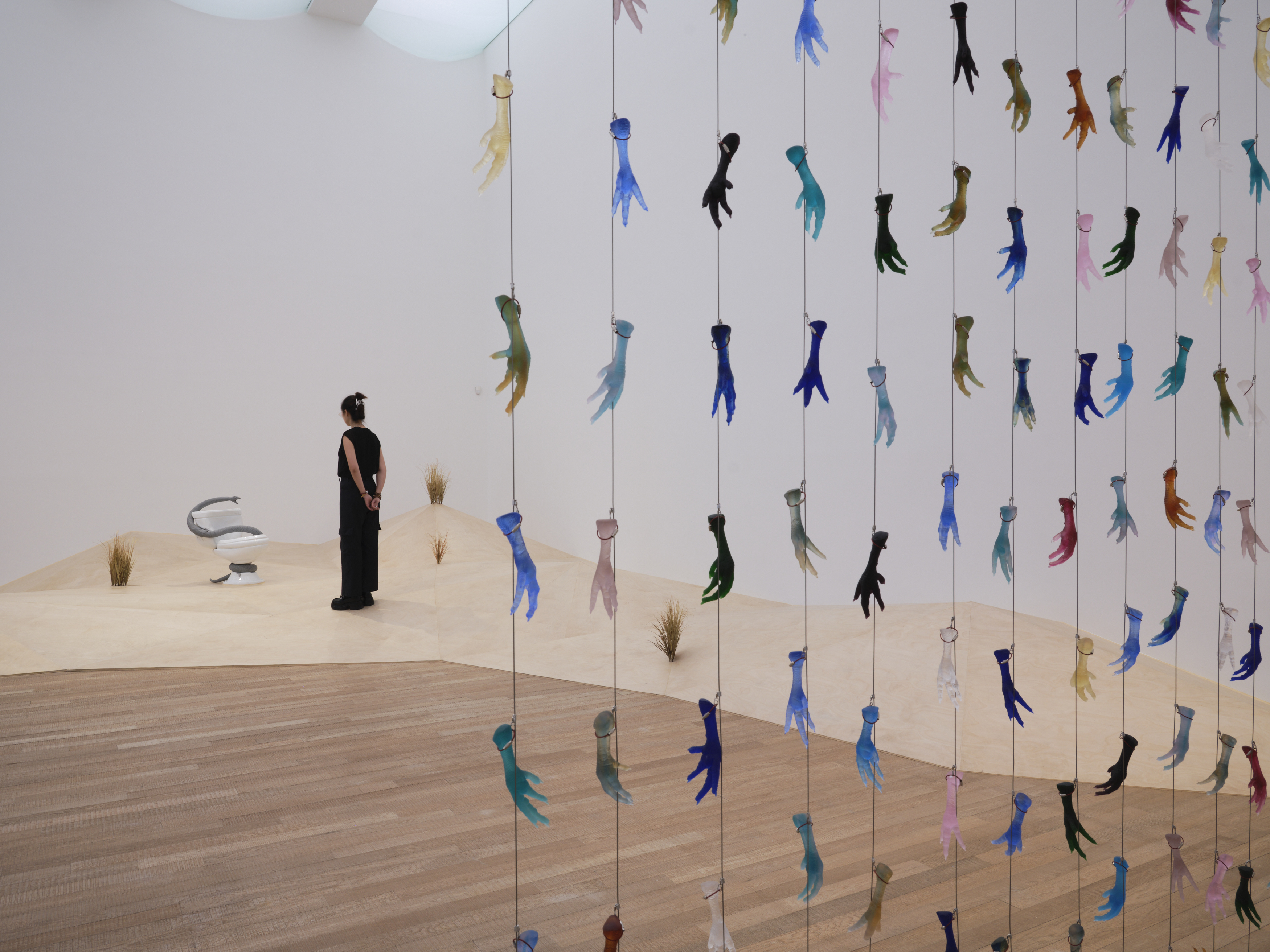
Installation view of “Tao Hui: In the Land Beyond Living”, Tai Kwun Contemporary, Hong Kong, 2024. Image courtesy of Tai Kwun.
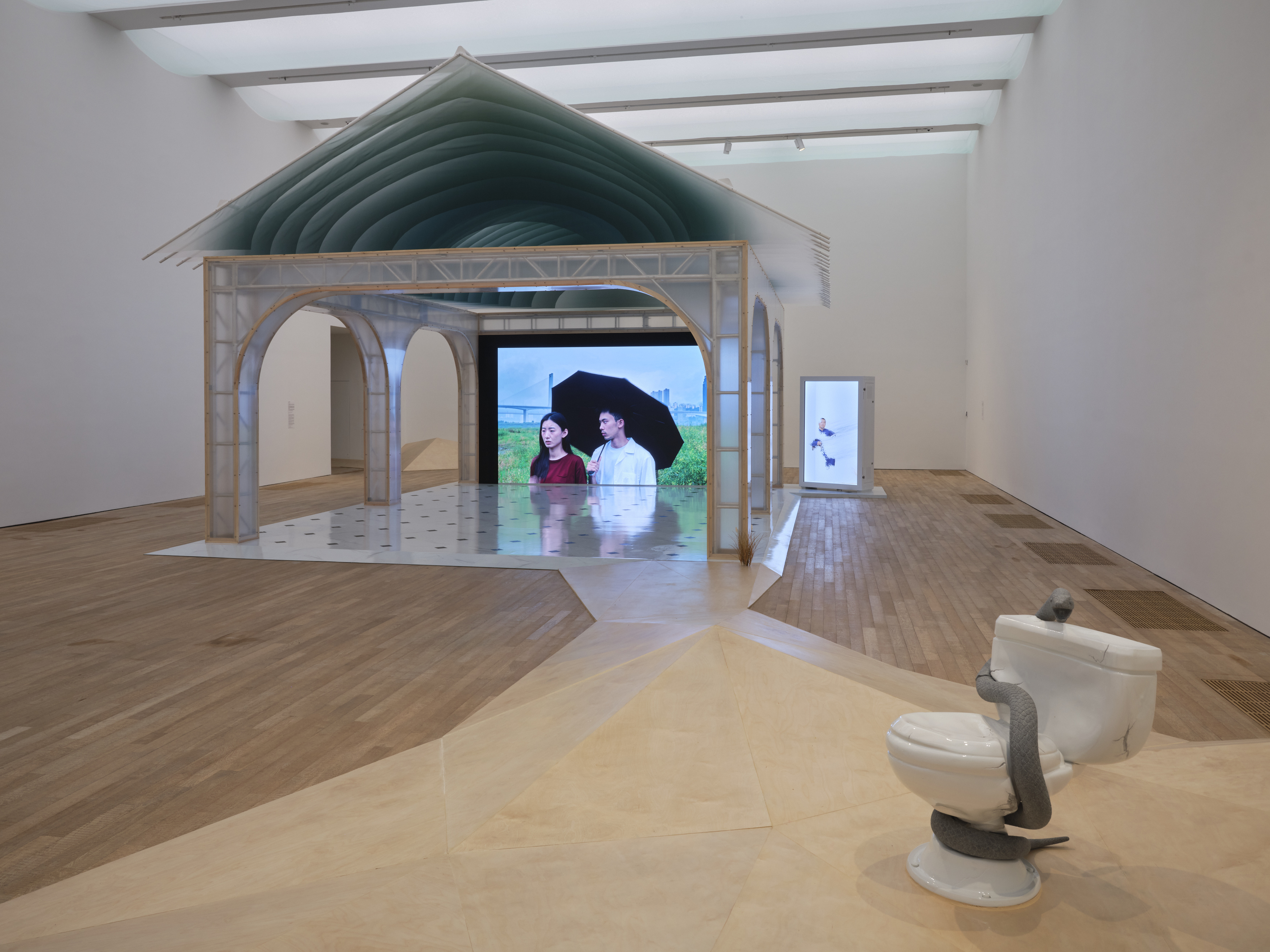
Installation view of “Tao Hui: In the Land Beyond Living”, Tai Kwun Contemporary, Hong Kong, 2024. Image courtesy of Tai Kwun.
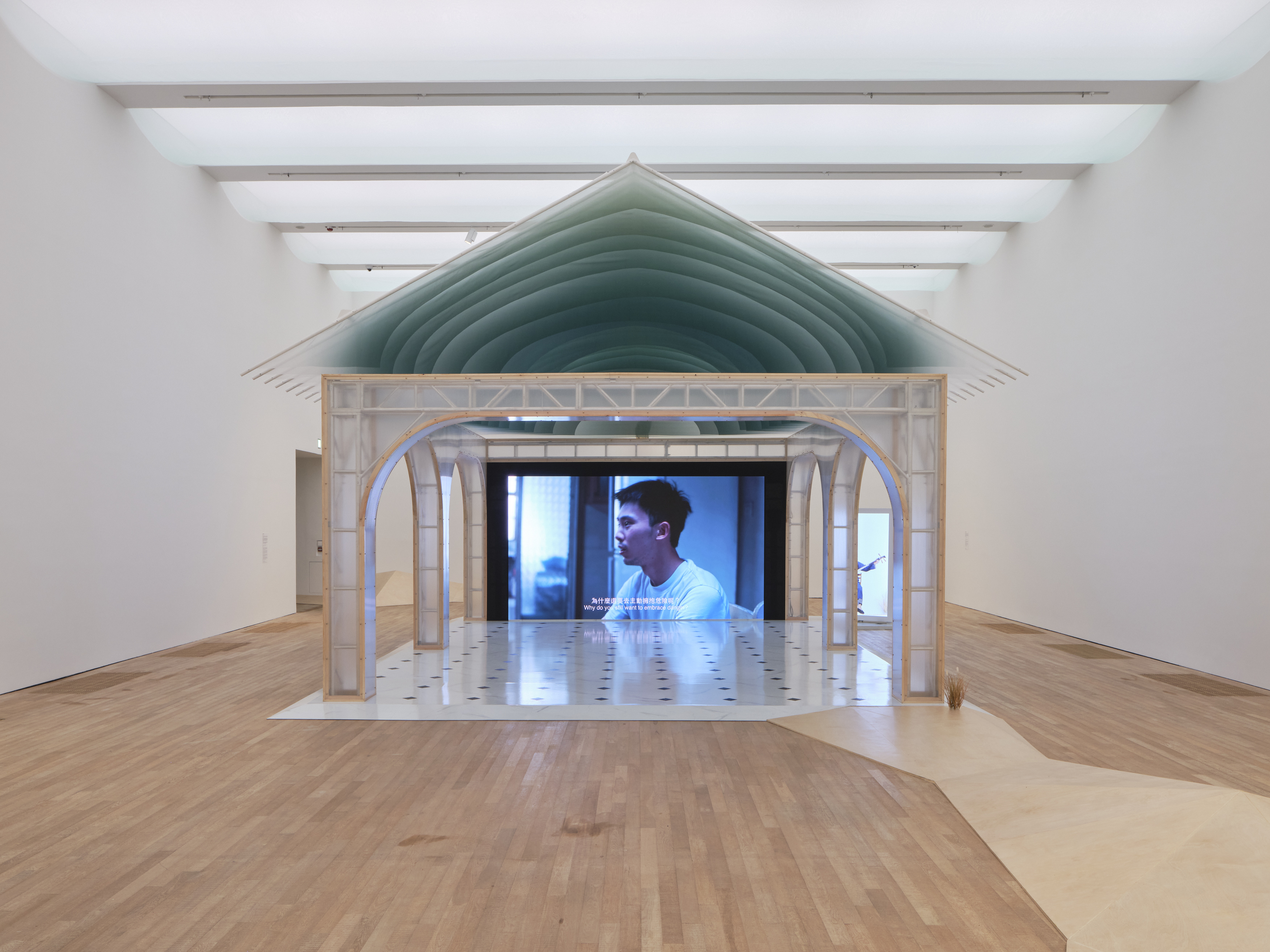
Double channel video
26’52”
Commissioned by Tai Kwun Contemporary
Installation view of “Tao Hui: In the Land Beyond Living”, Tai Kwun Contemporary, Hong Kong, 2024. Image courtesy of Tai Kwun.
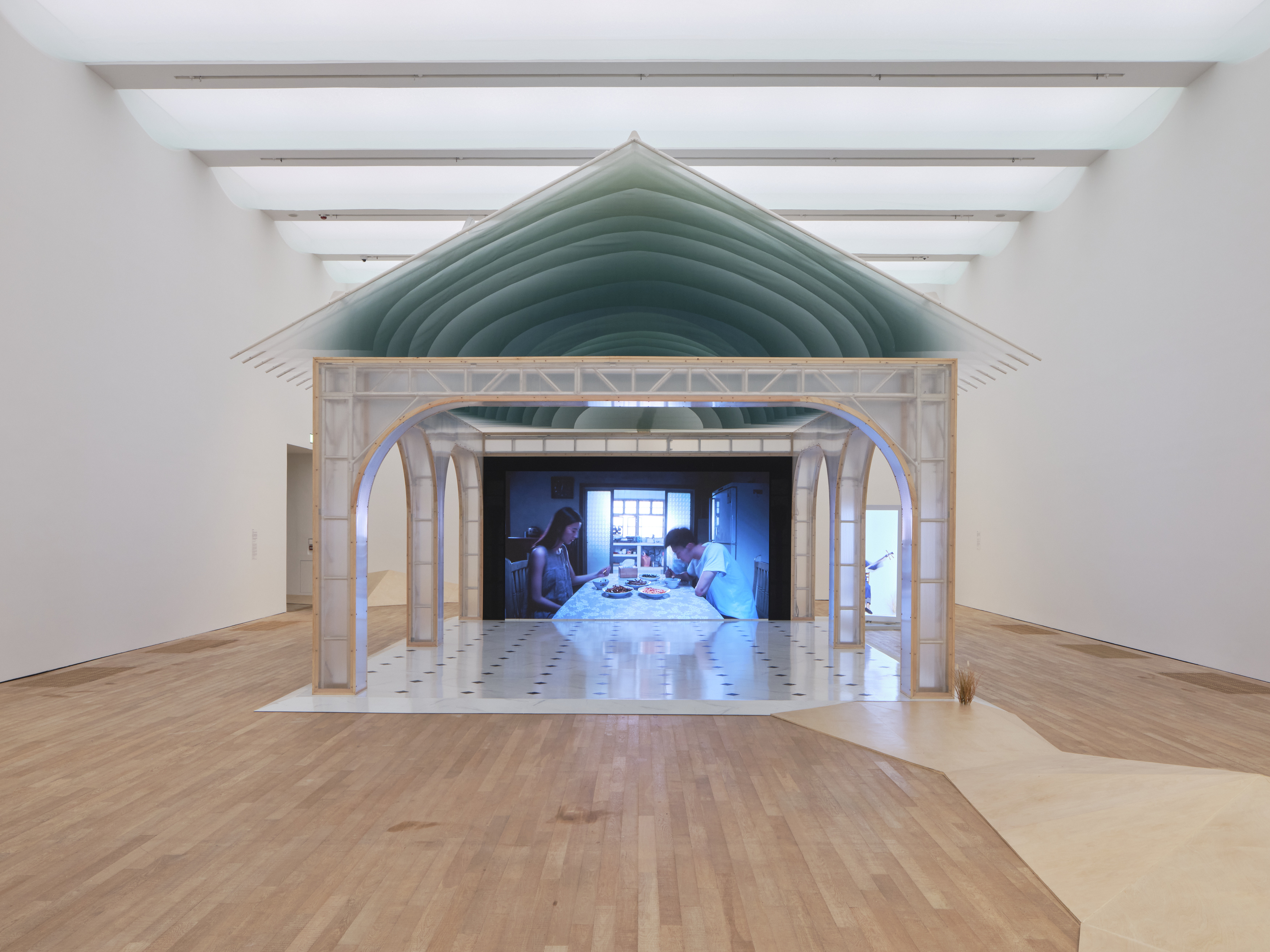
Double channel video
26’52”
Commissioned by Tai Kwun Contemporary
Installation view of “Tao Hui: In the Land Beyond Living”, Tai Kwun Contemporary, Hong Kong, 2024. Image courtesy of Tai Kwun.
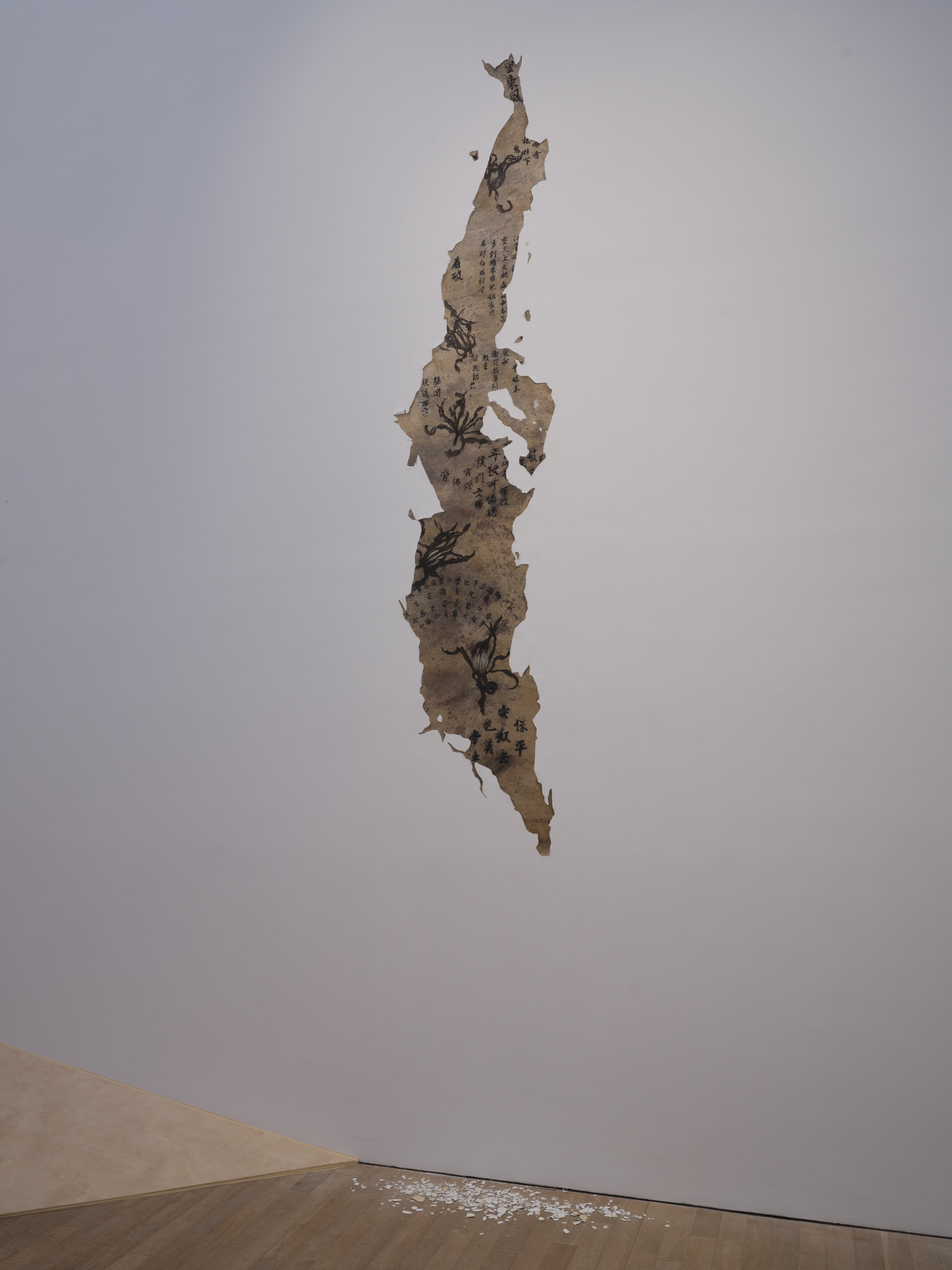
Mural wall painting with special peeled-off effect
3.5 x 1 m
Commissioned by Tai Kwun Contemporary
Installation view of “Tao Hui: In the Land Beyond Living”, Tai Kwun Contemporary, Hong Kong, 2024. Image courtesy of Tai Kwun.
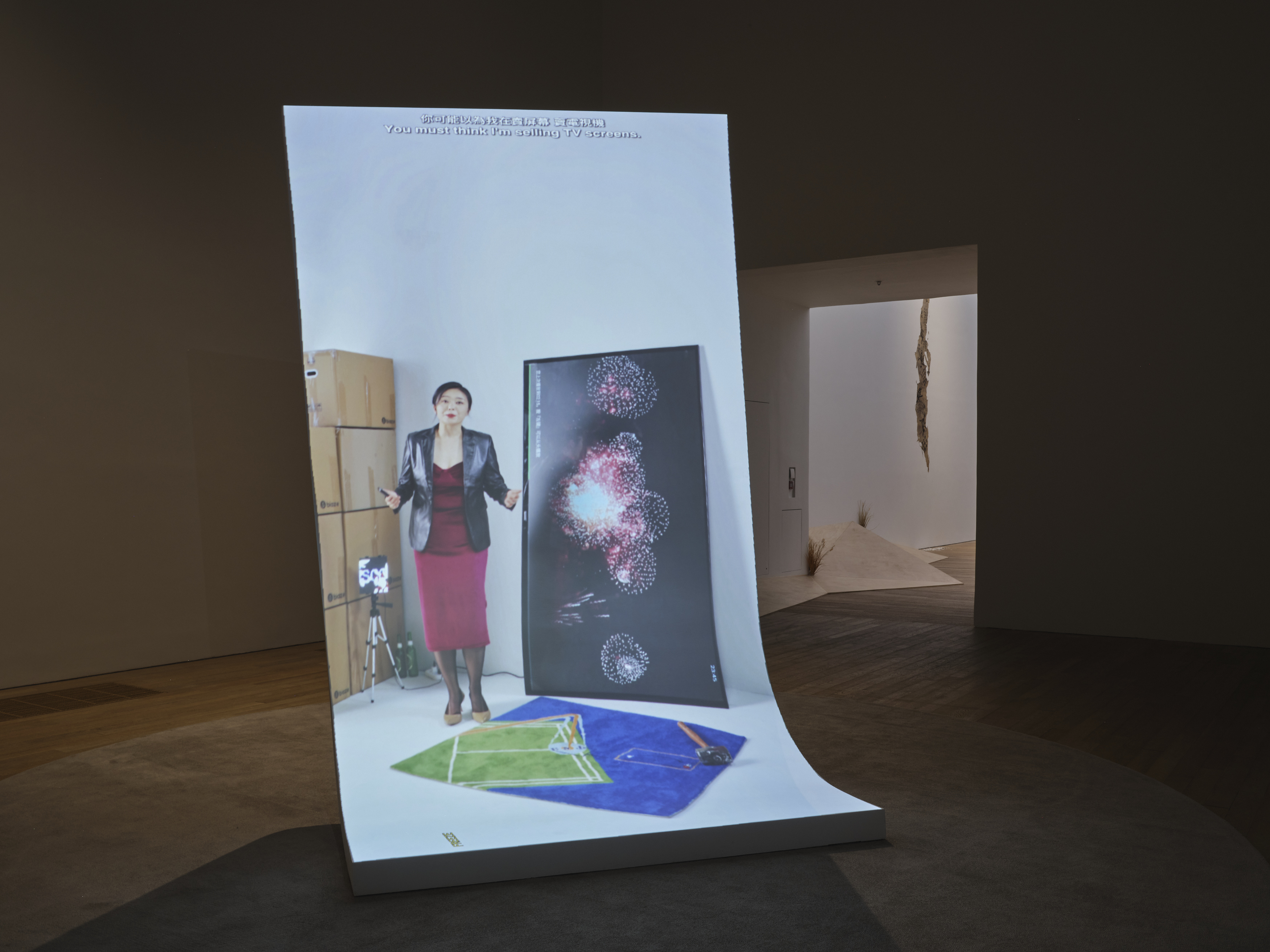
HD video projected on customized slanted and curved wooden screen
Screen size: 320 x 180 cm (126 x 70 7/8 in)
Duration: 12 min 43 sec
Installation view of “Tao Hui: In the Land Beyond Living”, Tai Kwun Contemporary, Hong Kong, 2024. Image courtesy of Tai Kwun.
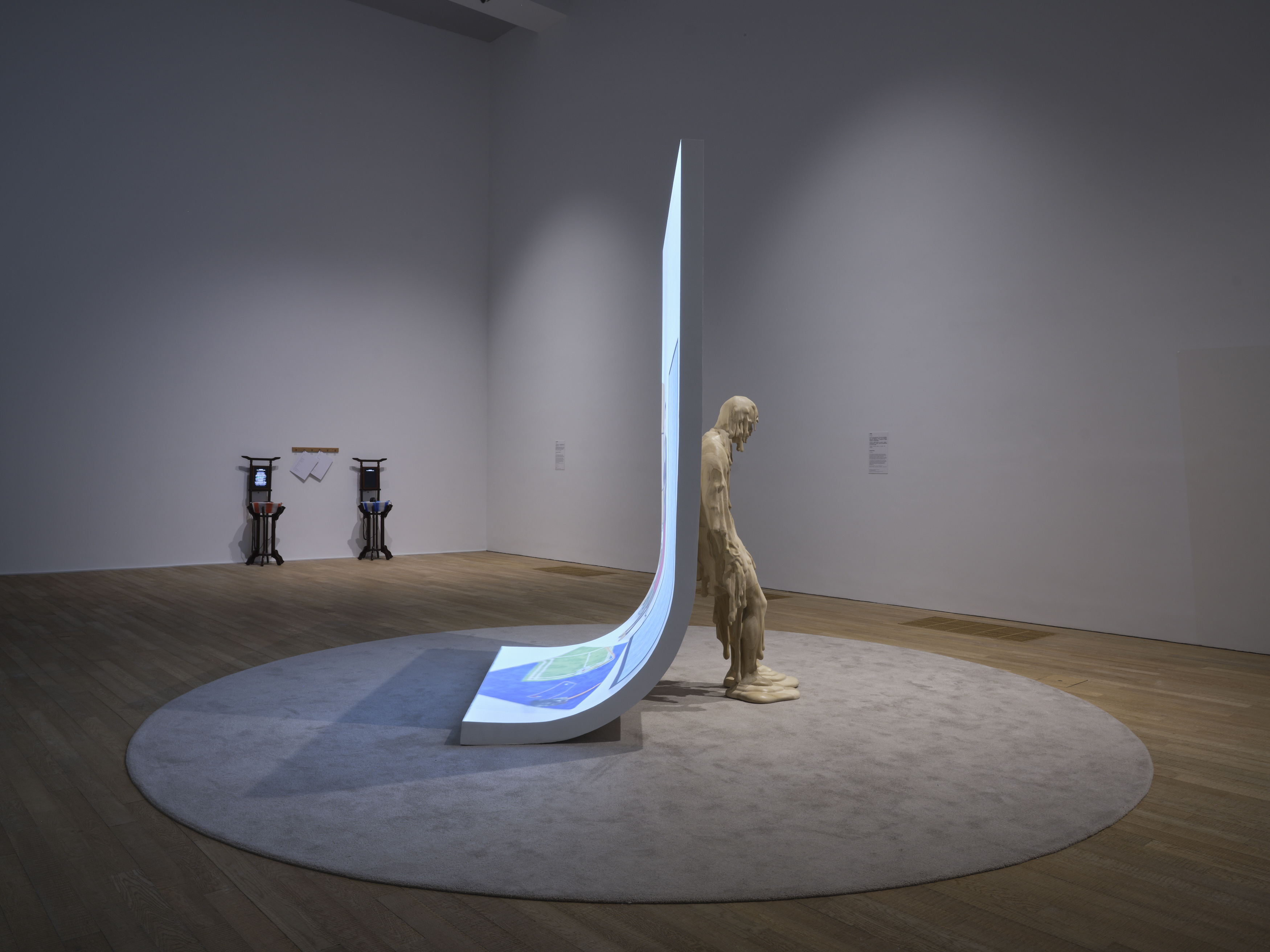
HD video projected on customized slanted and curved wooden screen
Screen size: 320 x 180 cm (126 x 70 7/8 in)
Duration: 12 min 43 sec
Installation view of “Tao Hui: In the Land Beyond Living”, Tai Kwun Contemporary, Hong Kong, 2024. Image courtesy of Tai Kwun.
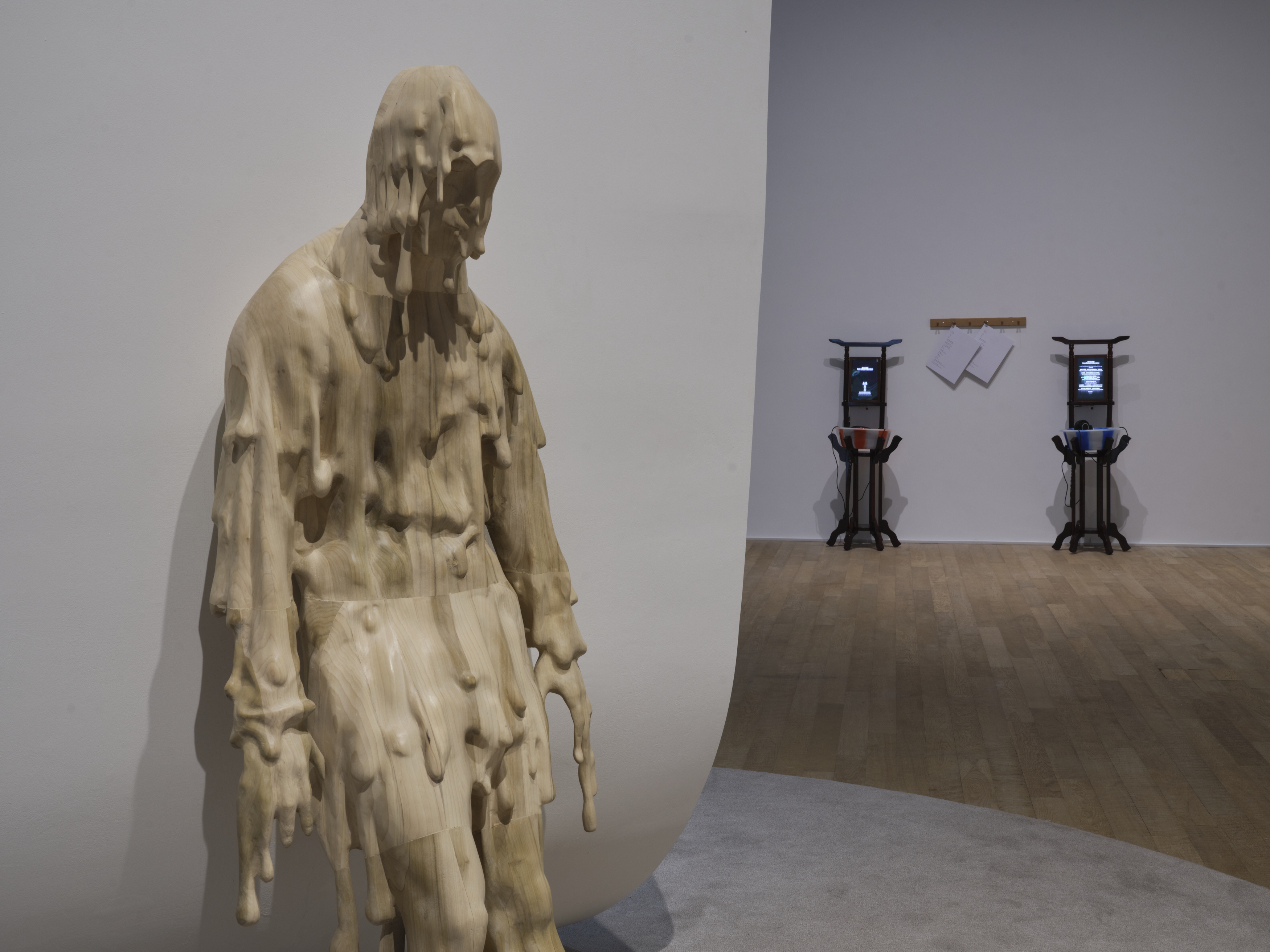
HD video projected on customized slanted and curved wooden screen
Screen size: 320 x 180 cm (126 x 70 7/8 in)
Duration: 12 min 43 sec
Installation view of “Tao Hui: In the Land Beyond Living”, Tai Kwun Contemporary, Hong Kong, 2024. Image courtesy of Tai Kwun.
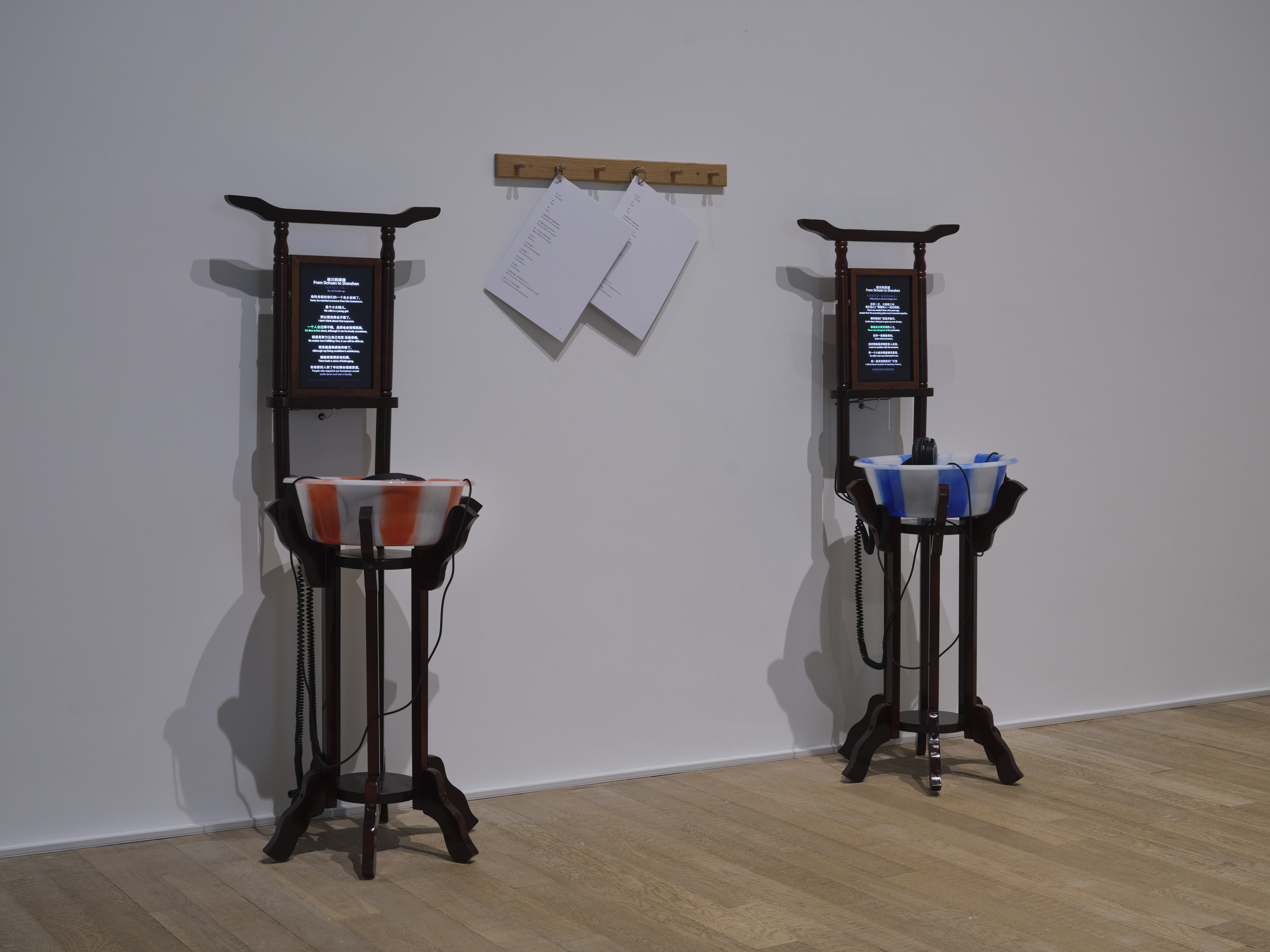
Stereophony
13 min 29 sec
Installation view of “Tao Hui: In the Land Beyond Living”, Tai Kwun Contemporary, Hong Kong, 2024. Image courtesy of Tai Kwun.
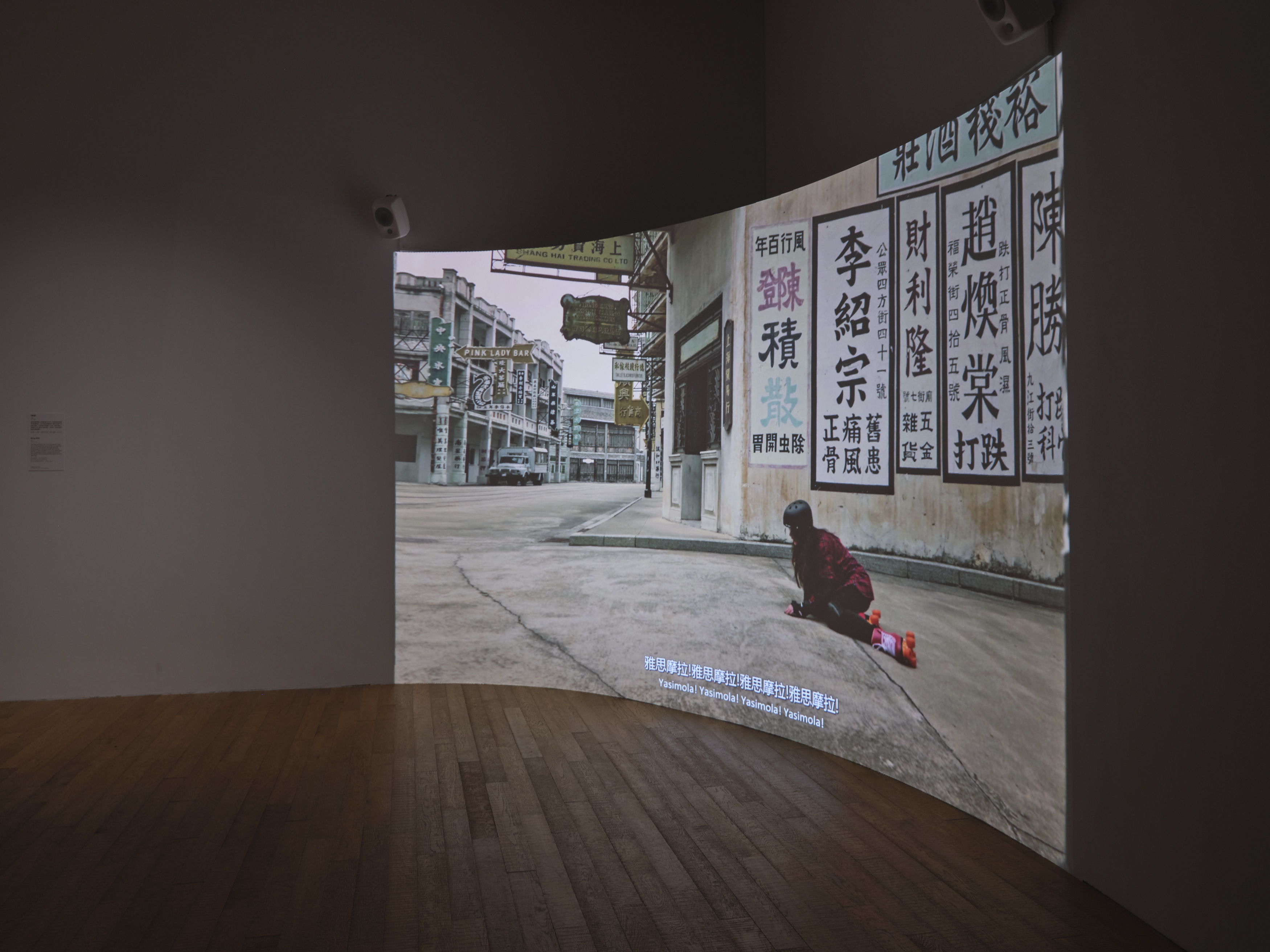
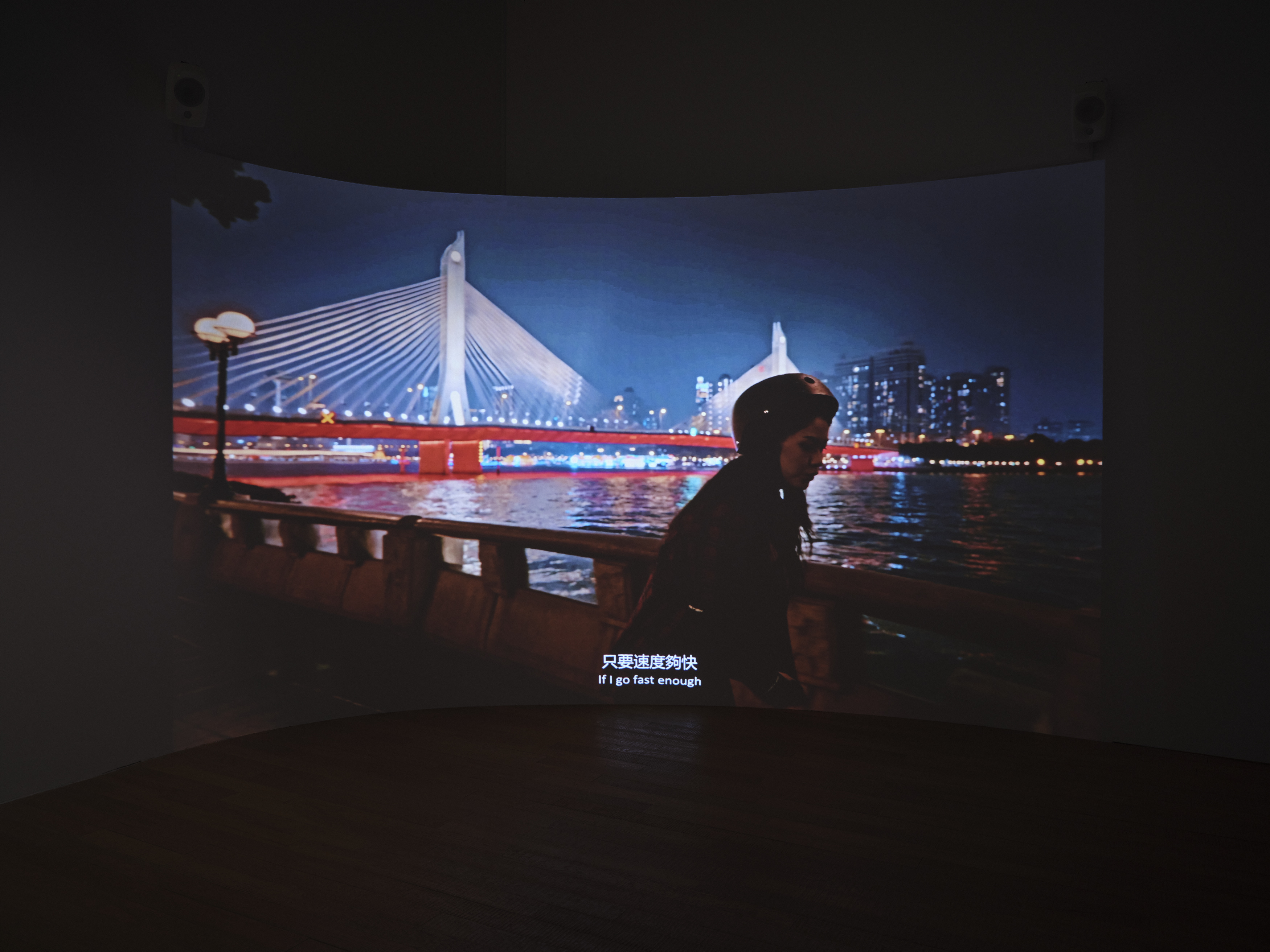

Installation view of “Tao Hui: In the Land Beyond Living”, Tai Kwun Contemporary, Hong Kong, 2024. Image courtesy of Tai Kwun.
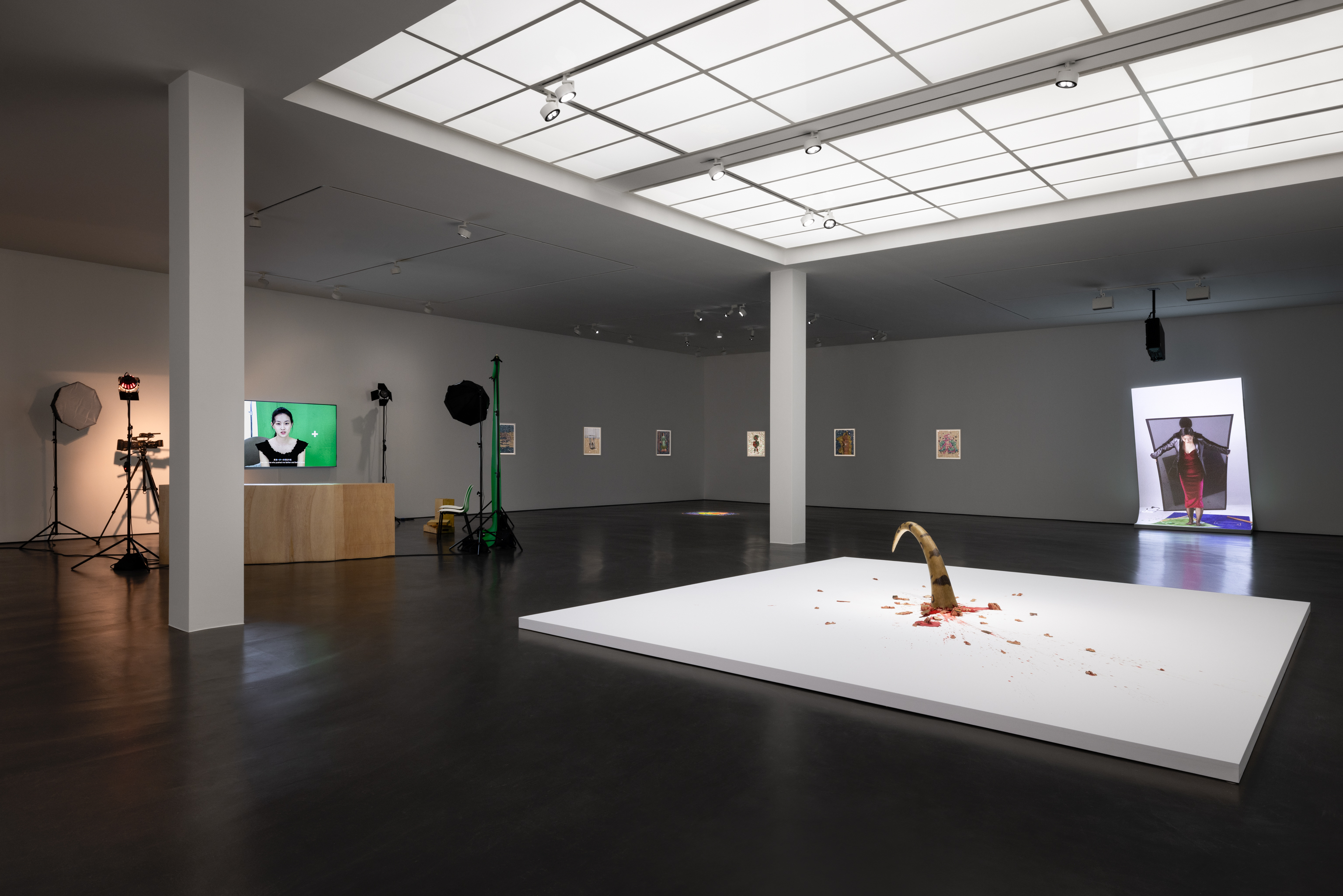
Exhibition view of “We, Entertainment”, Esther Schipper, Berlin, 2023.
Image courtesy of the artist and Esther Schipper (Berlin | Paris | Seoul).
Photo © Andrea Rossetti
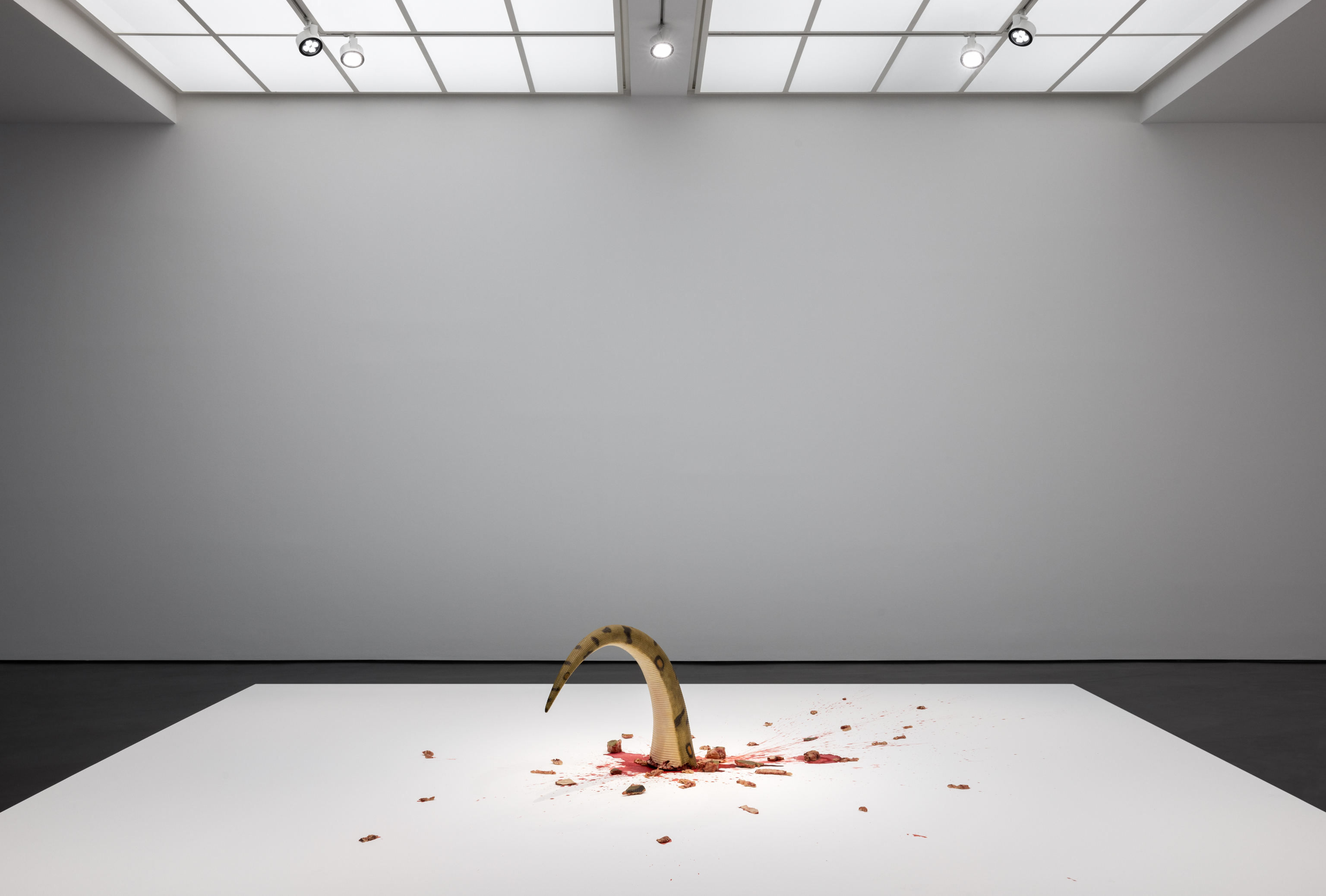
Tail: 65 x 95 x 22 cm
Image courtesy of the artist and Esther Schipper (Berlin | Paris | Seoul).
Photo © Andrea Rossetti

Duration: 22 min 18 sec
Image courtesy of the artist and Esther Schipper (Berlin | Paris | Seoul).
Photo © Andrea Rossetti
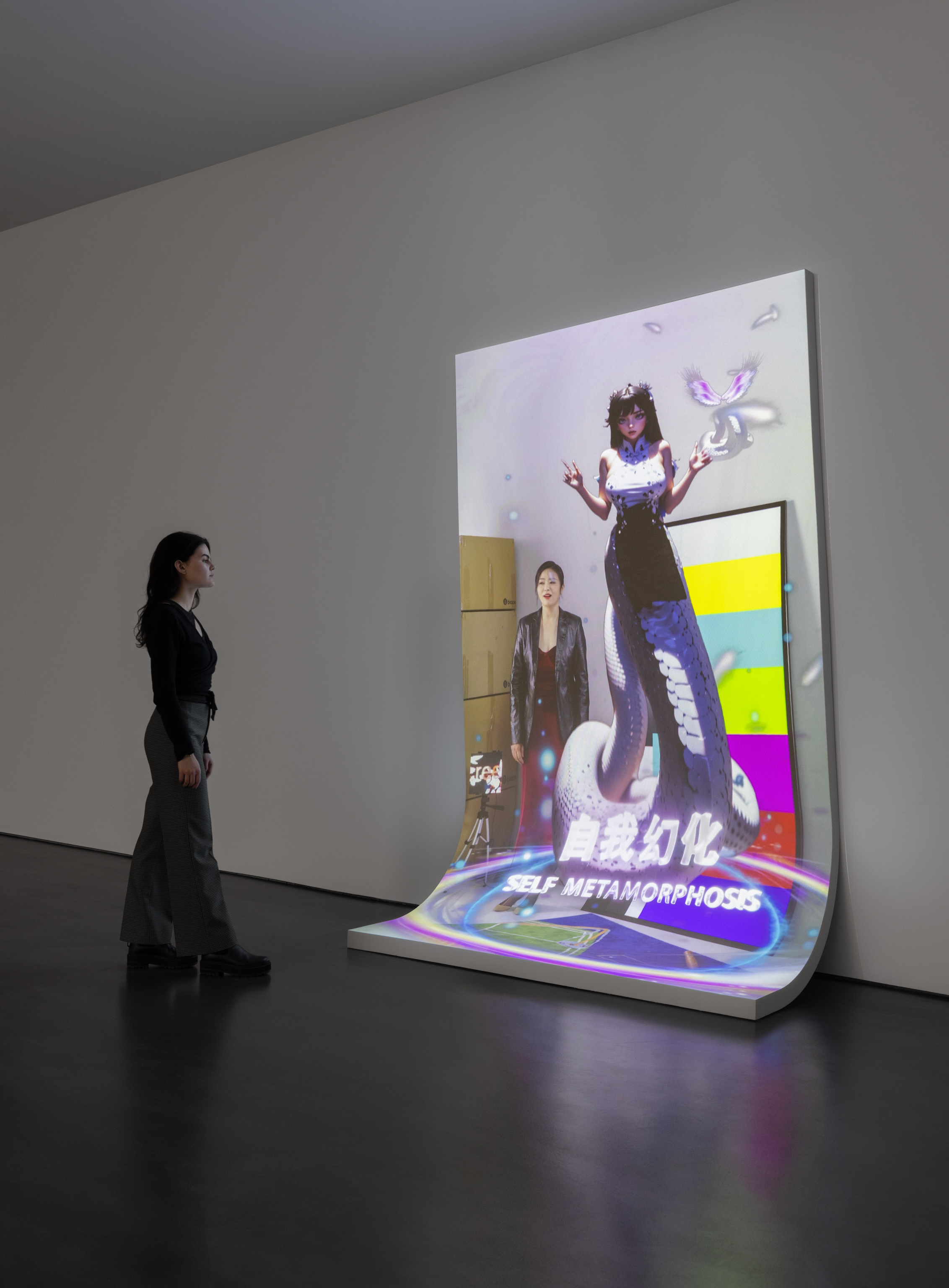
Duration: 12 min 43 sec
Image courtesy of the artist and Esther Schipper (Berlin | Paris | Seoul).
Photo © Andrea Rossetti

Exhibition view of “We, Entertainment”, Esther Schipper, Berlin, 2023.
Image courtesy of the artist and Esther Schipper (Berlin | Paris | Seoul).
Photo © Andrea Rossetti
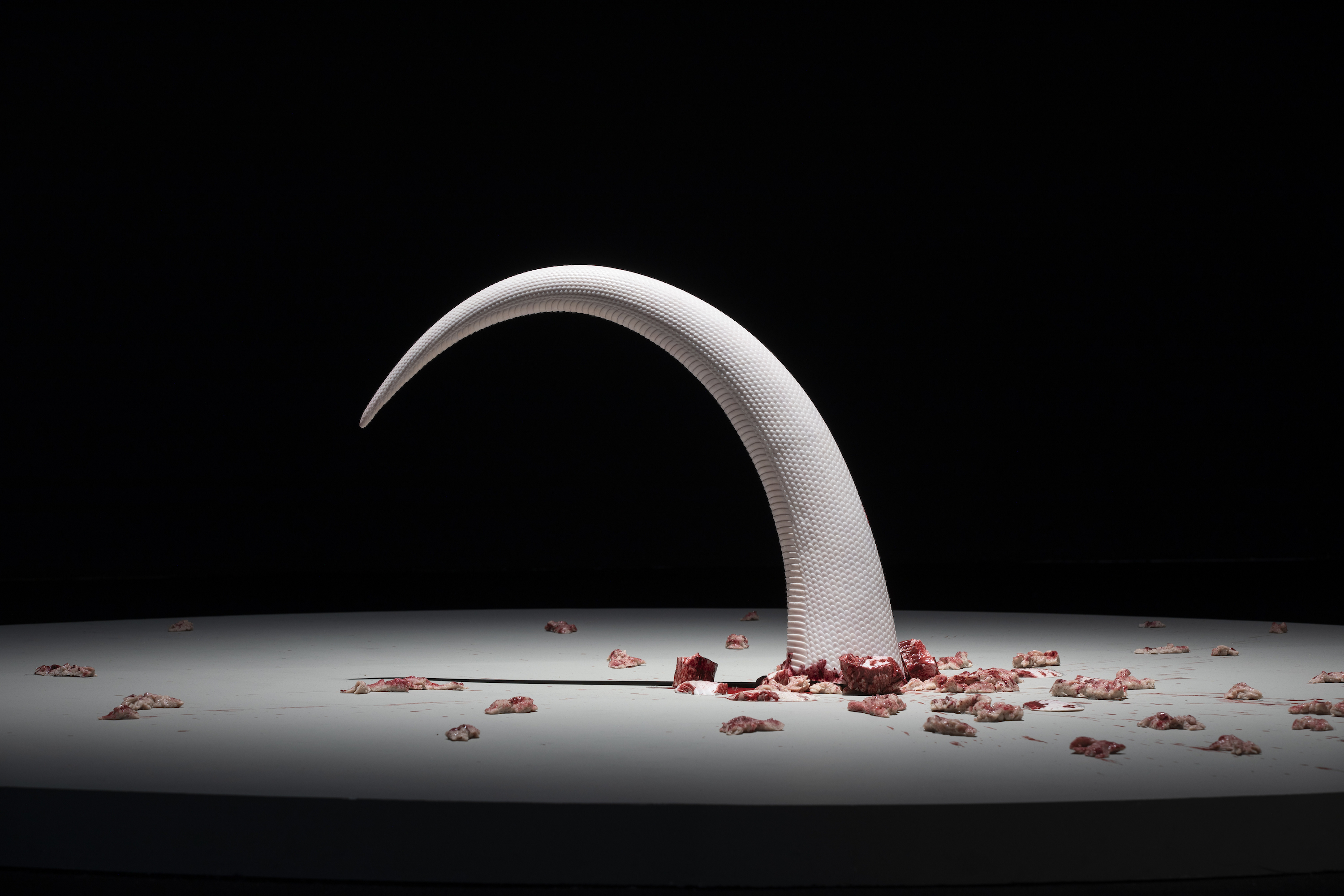
Silica gel, fiberglass, metal, paint
Width: 398 cm; tail: 65 × 95 × 22 cm
Installation view of the 14th Shanghai Biennale: Cosmos Cinema, Power Station of Art, Shanghai, 2023.
Courtesy of Power Station of Art

Silica gel, fiberglass, metal, paint
Width: 398 cm; tail: 65 × 95 × 22 cm
Installation view of the 14th Shanghai Biennale: Cosmos Cinema, Power Station of Art, Shanghai, 2023.
Courtesy of Power Station of Art

Single channel HD video, color, sound
14 min 12 sec
Installation view of “Motion Is Action – 35 Years of Chinese Media Art”, BY ART MATTERS, Hangzhou, 2023.
Image courtesy of BY ART MATTERS, photo by Liuliu Jiang.
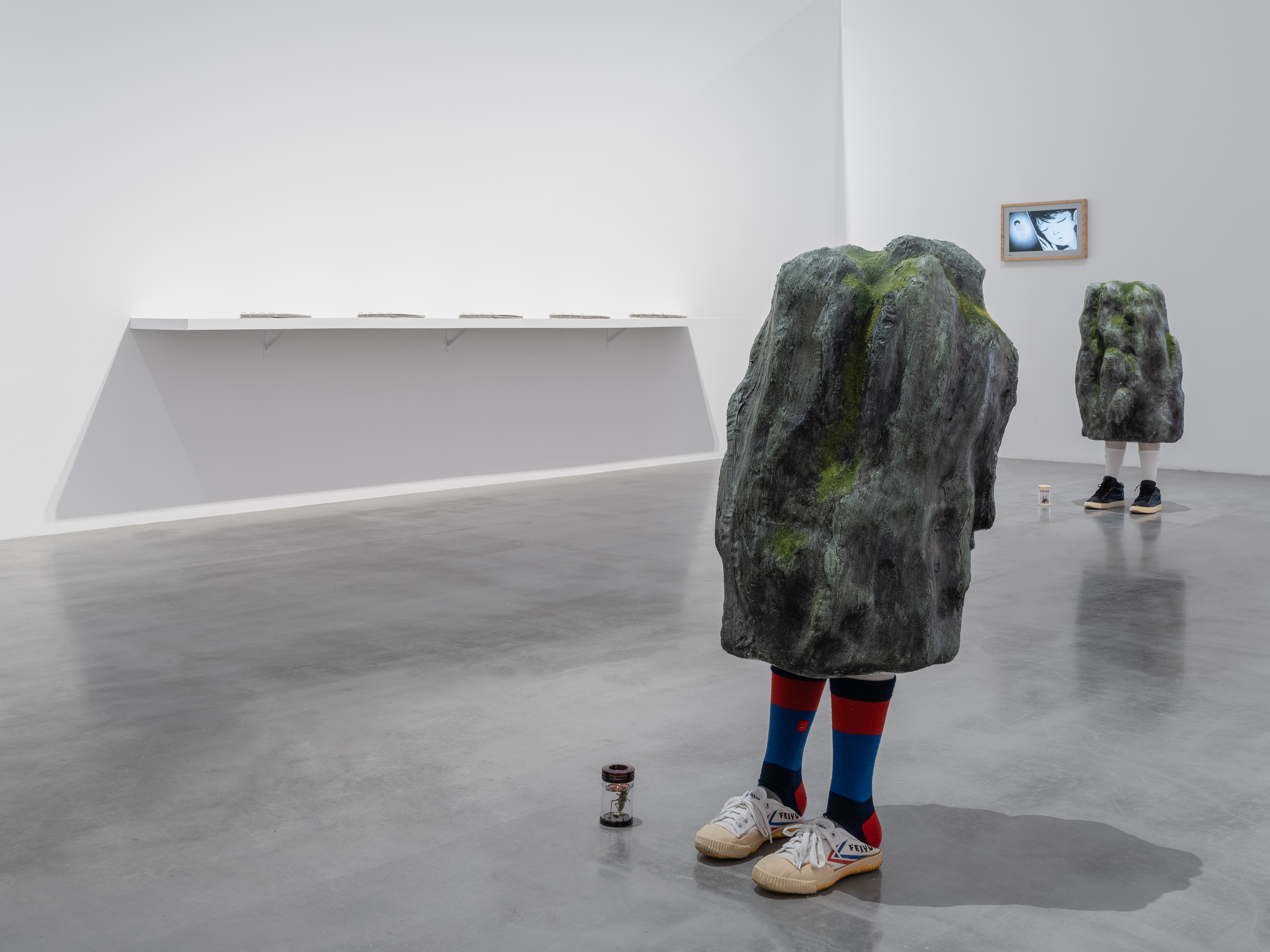
Installation view of “Bordercrossing: Possibilities and Interactions” at Yuz Museum, Shanghai, 2023.
Photo by Alessandro Wang.
Courtesy of Yuz Museum.
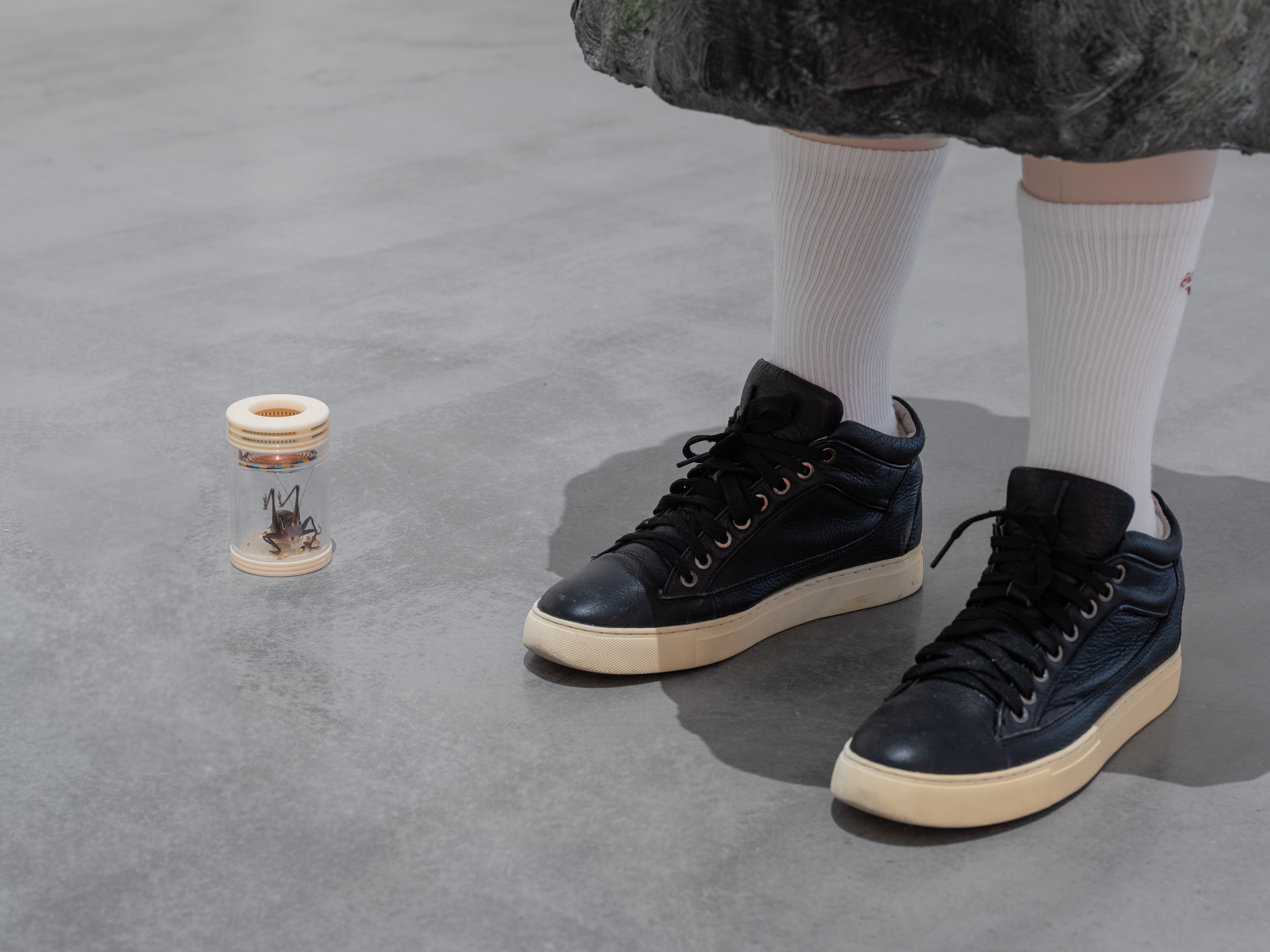
Installation view of “Bordercrossing: Possibilities and Interactions” at Yuz Museum, Shanghai, 2023.
Photo by Alessandro Wang.
Courtesy of Yuz Museum.
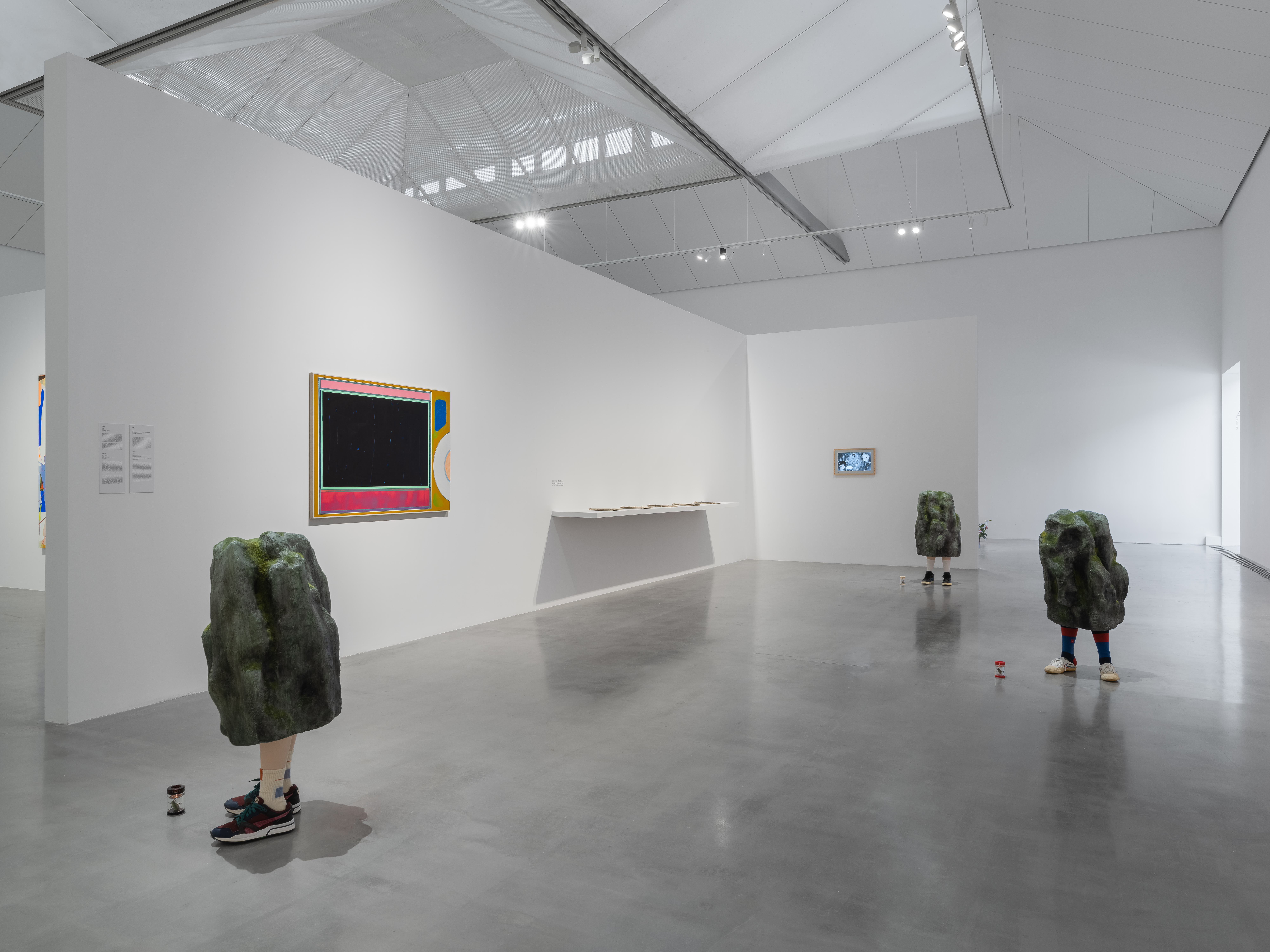
Installation view of “Bordercrossing: Possibilities and Interactions” at Yuz Museum, Shanghai, 2023.
Photo by Alessandro Wang.
Courtesy of Yuz Museum.
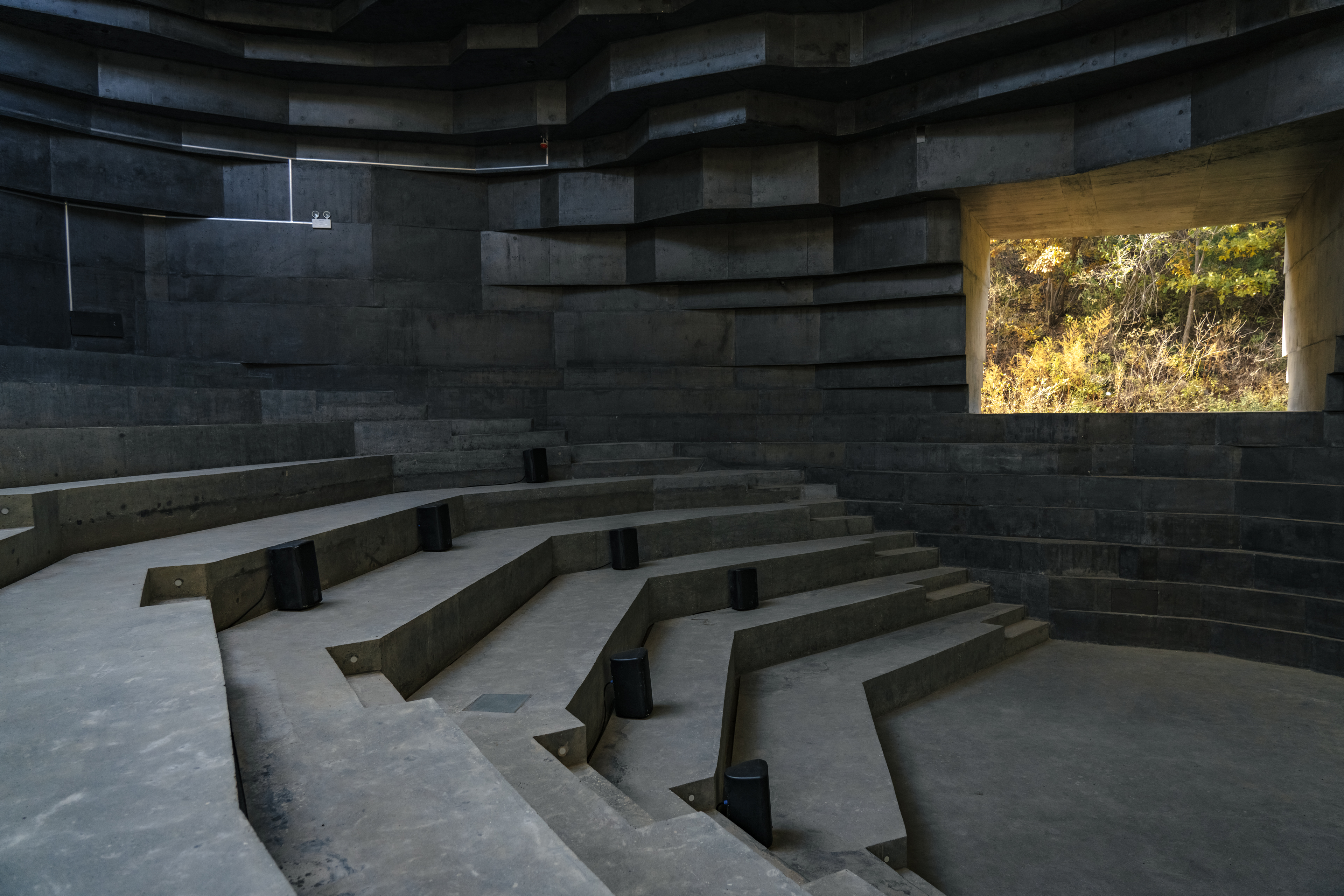
Installation view of ‘Speakers in the Square’
Commissioned and produced by Aranya Art Center and the Chapel of Sound, Aranya Jinshanling.
Photography: Ni Nan.
© Tao Hui
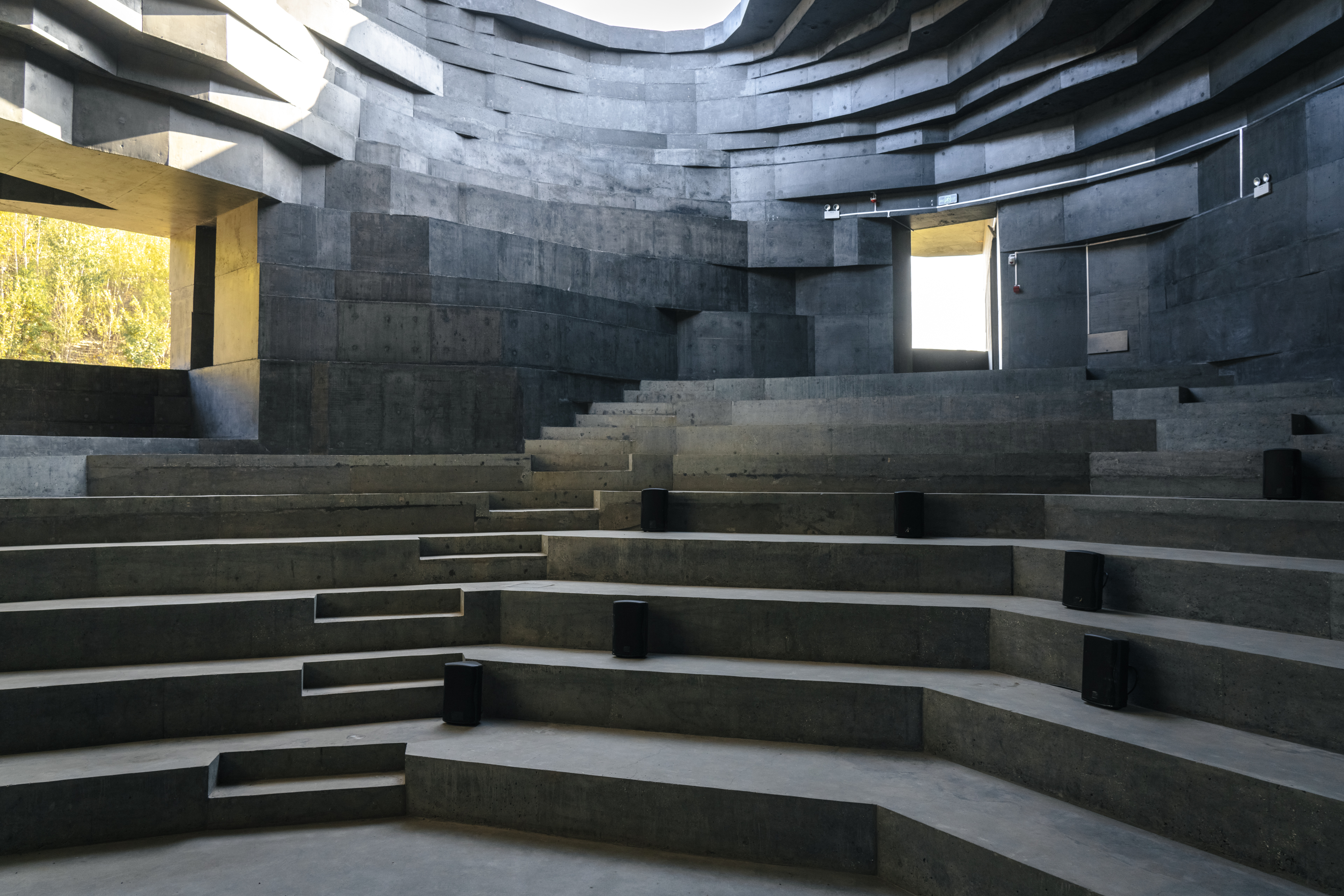
Installation view of ‘Speakers in the Square’
Commissioned and produced by Aranya Art Center and the Chapel of Sound, Aranya Jinshanling.
Photography: Ni Nan.
© Tao Hui

Tao Hui, ‘Searing Pain’ at Aranya Art Center
Courtesy of Aranya Art Center
Photography: Sun Shi
© Tao Hui

Tao Hui, ‘Searing Pain’ at Aranya Art Center
Courtesy of Aranya Art Center
Photography: Sun Shi
© Tao Hui

Tao Hui, ‘Searing Pain’ at Aranya Art Center
Courtesy of Aranya Art Center
Photography: Sun Shi
© Tao Hui

Tao Hui, ‘Searing Pain’ at Aranya Art Center
Courtesy of Aranya Art Center
Photography: Sun Shi
© Tao Hui

Tao Hui, ‘Searing Pain’ at Aranya Art Center
Courtesy of Aranya Art Center
Photography: Sun Shi
© Tao Hui

Commissioned by Macalline Art Center.
Installation view at the exhibition “The Elephant Escaped”, Macalline Art Center, Beijing, 2022.
Image courtesy of Macalline Art Center.
Photographer: Lin Banye @ AGENT PAY
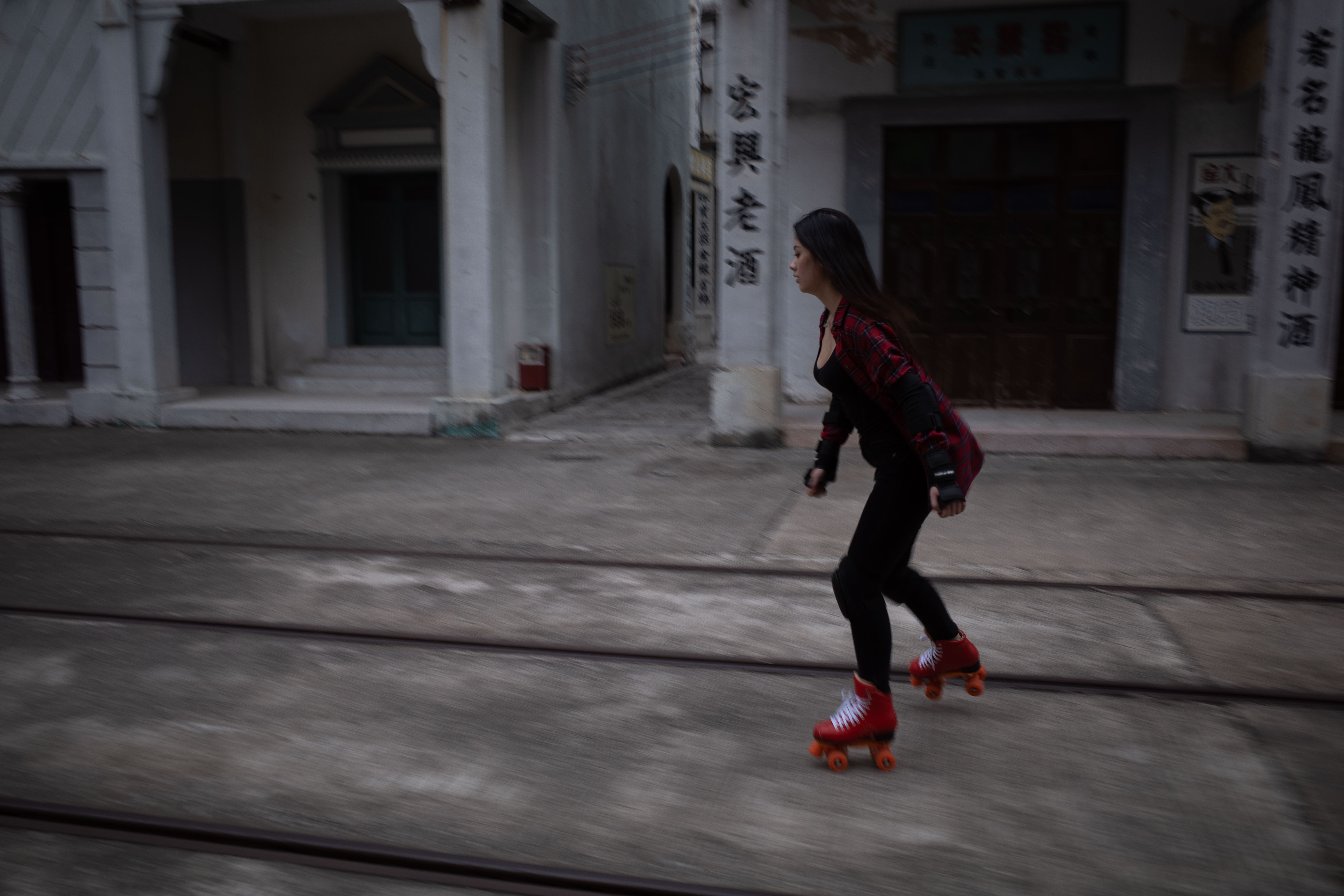
Single-channel HD video, colour, with sound
12 min 3 sec
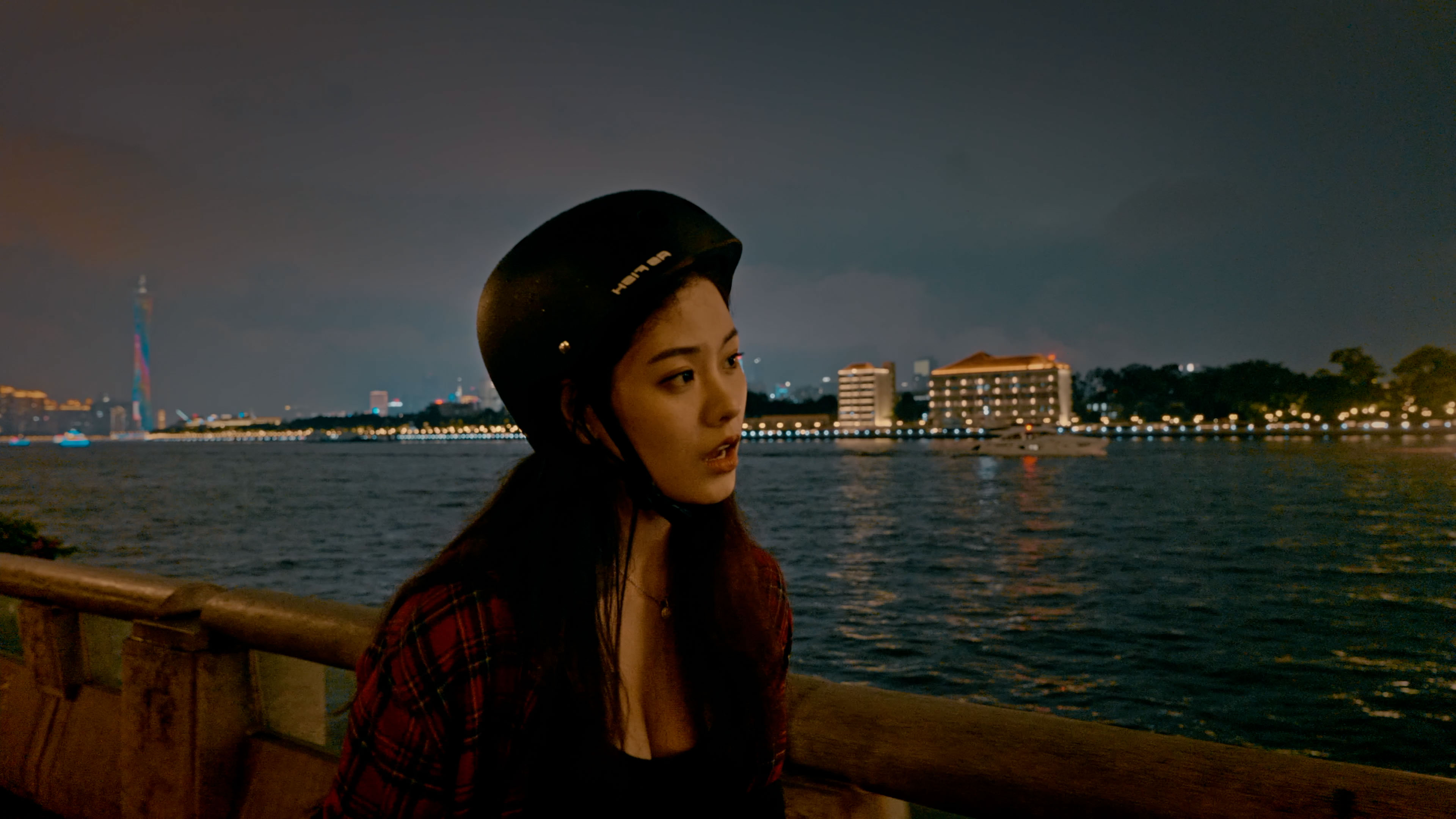
Single-channel HD video, colour, with sound
12 min 3 sec
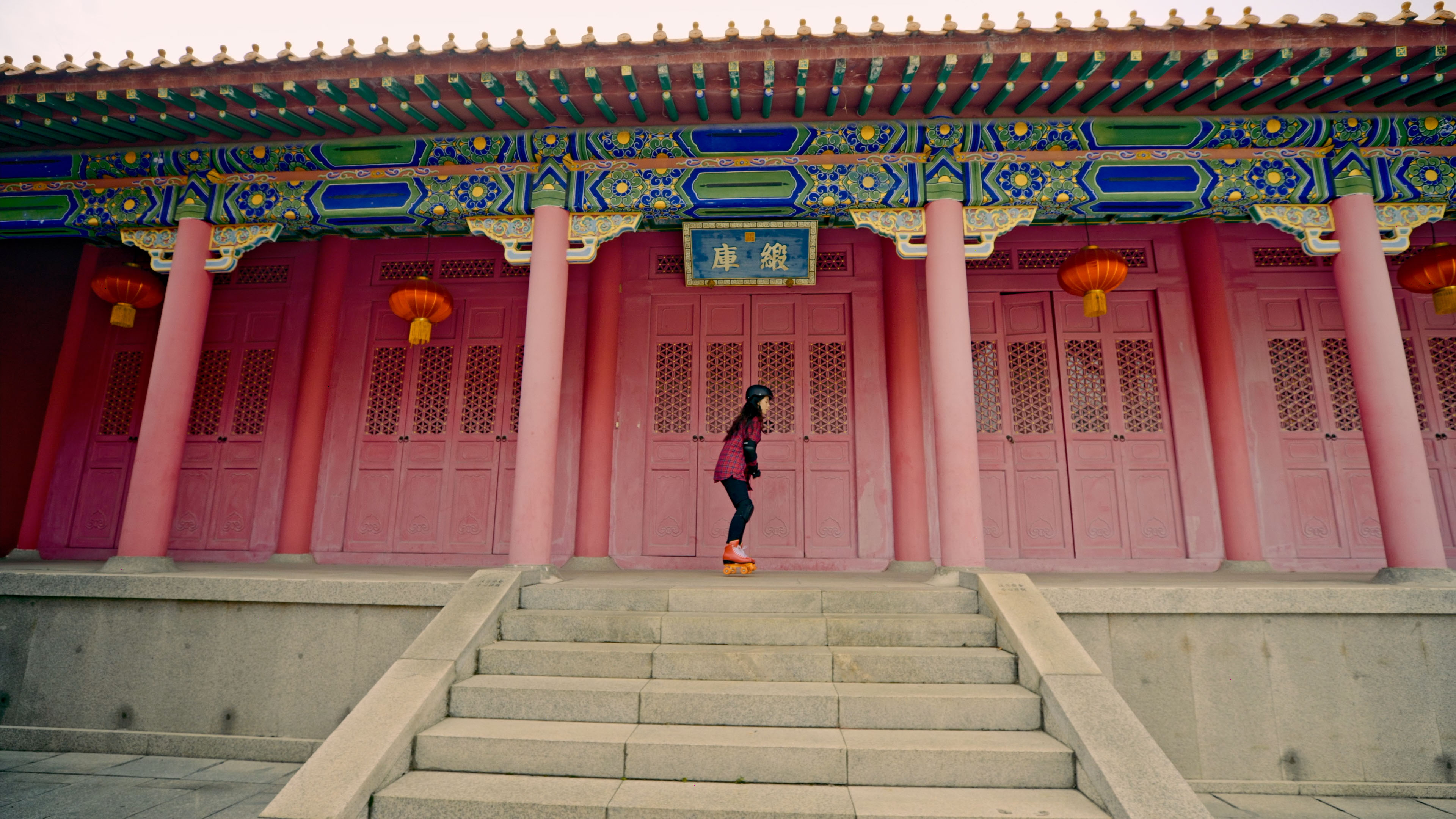
Single-channel HD video, colour, with sound
12 min 3 sec
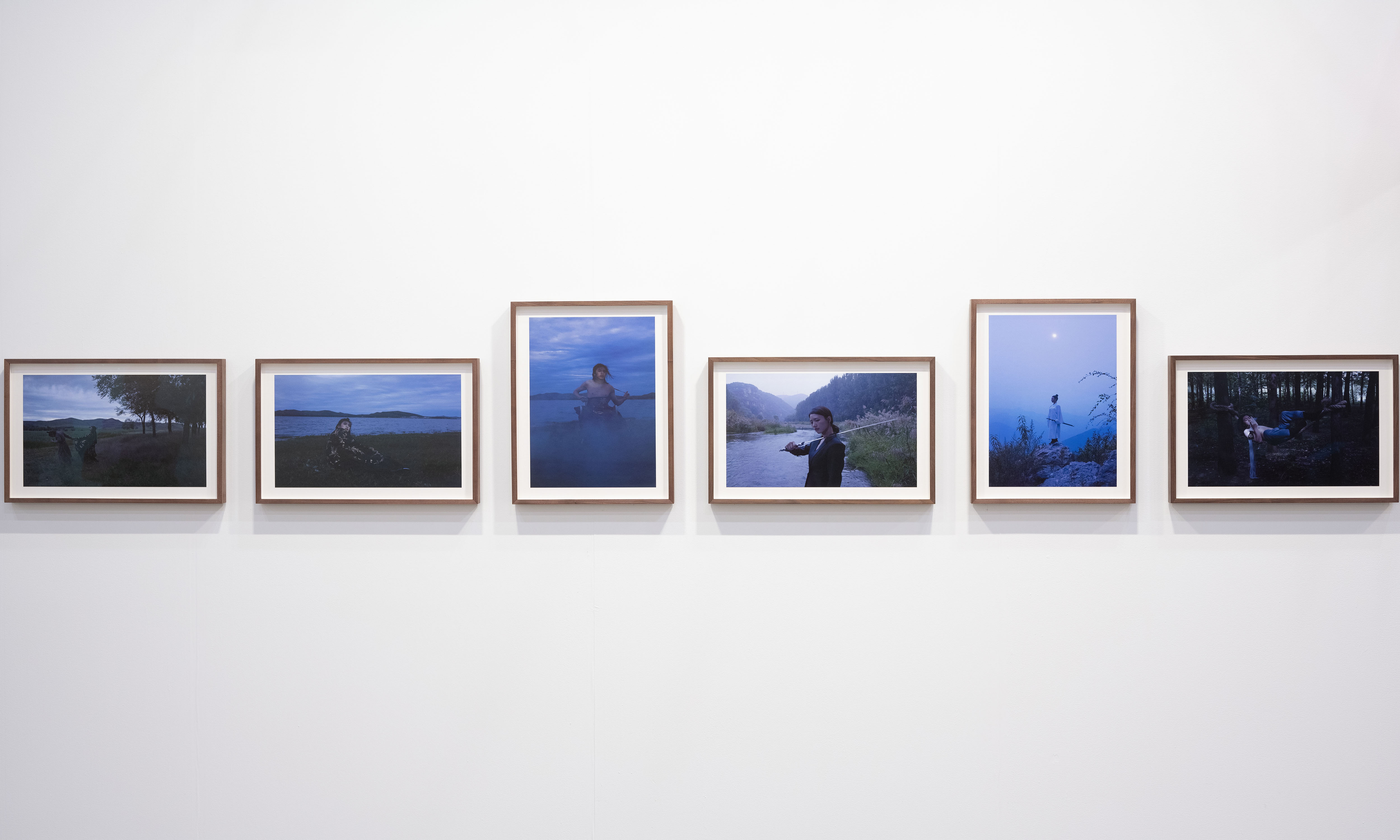
Archival Pigment Print, mounted on museum board
A set of 6, each 30 × 45 cm (horizontal) or 45 × 30 cm (vertical)

Single channel video installation, color and sound
Video: 12 min 36 sec
Monitor: 22.1 x 110.1 cm

Single channel video installation, color and sound
Video: 12 min 36 sec
Monitor: 22.1 x 110.1 cm
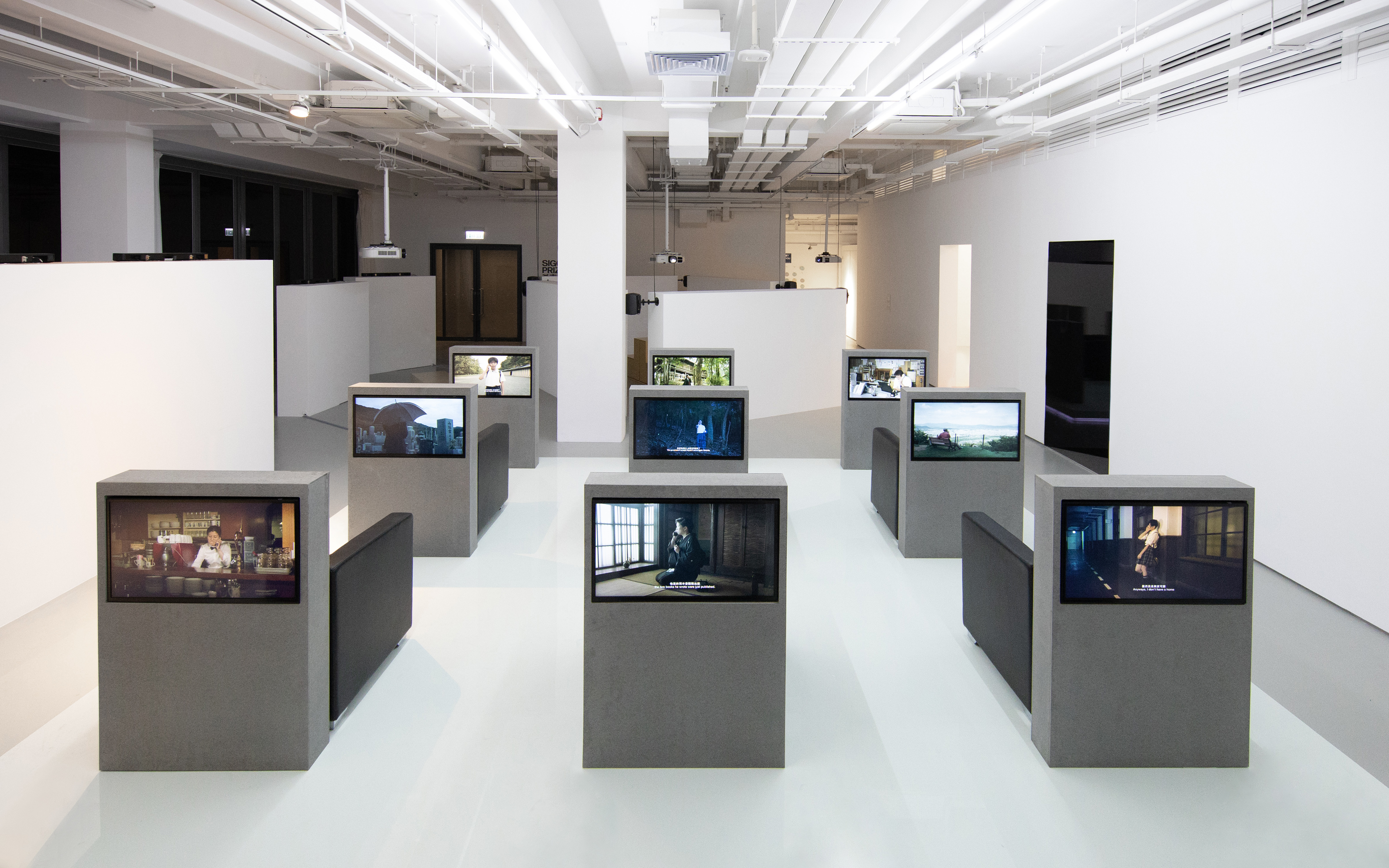
HD video installation (colour, sound), 40 min
Courtesy of the artist, Kyoto Art Center, Rockbund Art Museum, and Luxelakes·A4 Art Museum.
Installation view, 2019
Image: Winnie Yeung @ iMAGE28
Courtesy of M+, Hong Kong
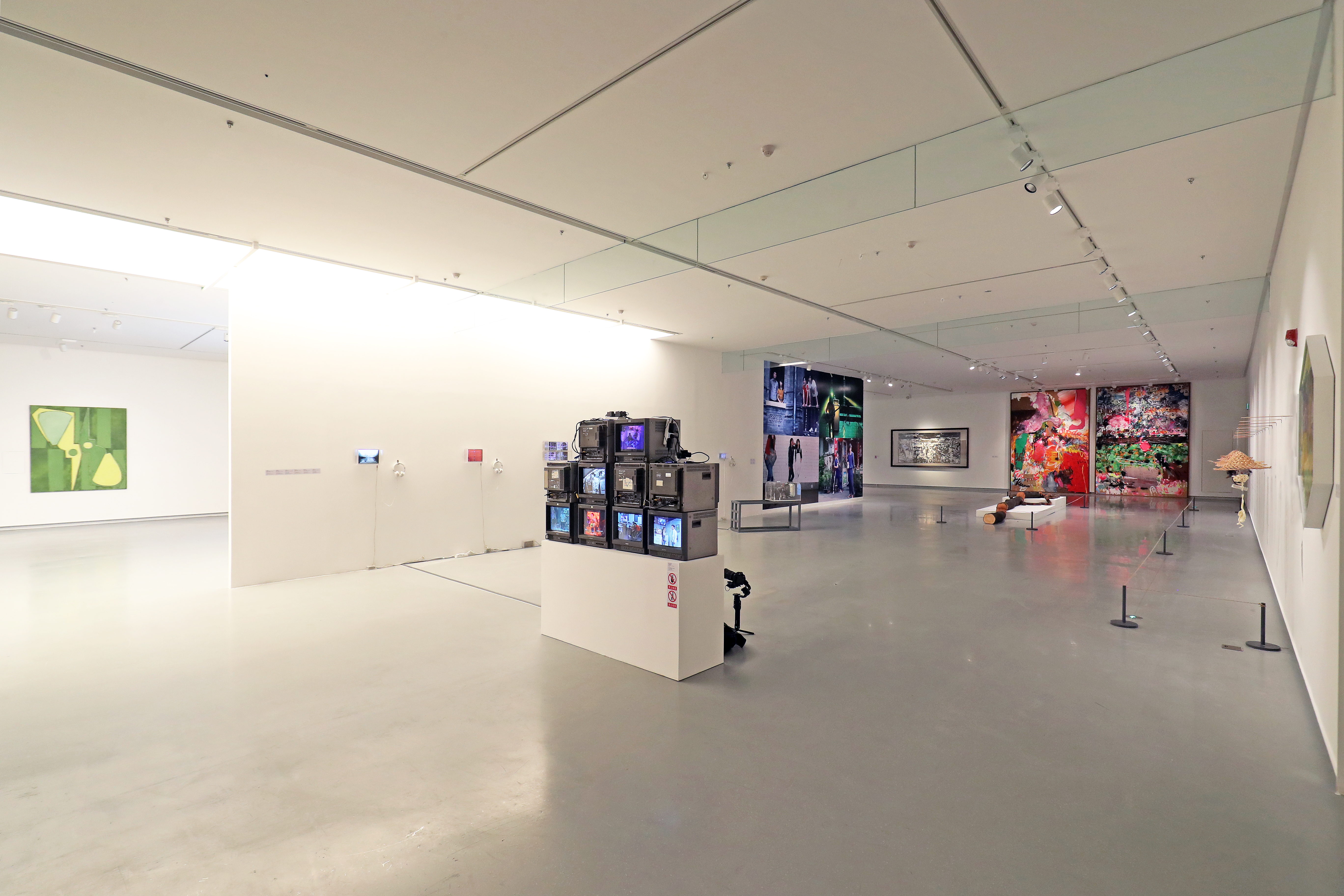
Installation view, ‘New Start: The 3rd Shenzhen Biennale of Contemporary Art — Concept, Form and Daily Life’, Shenzhen UNESCO Gallery, The Sea World Culture and Arts Centre, Shenzhen, China, 2019
Image courtesy of Shenzhen Biennale of Contemporary Art
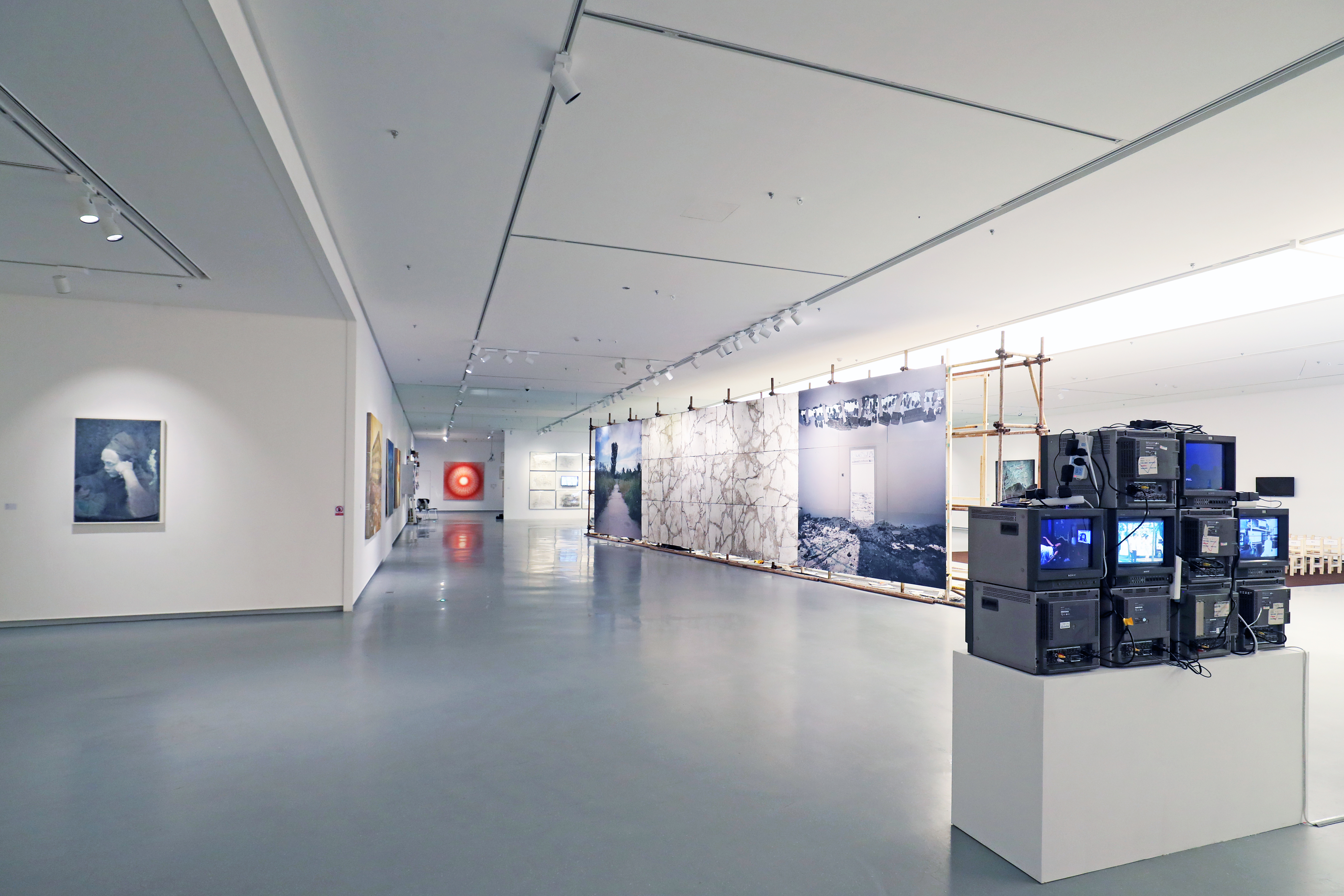
Installation view, ‘New Start: The 3rd Shenzhen Biennale of Contemporary Art — Concept, Form and Daily Life’, Shenzhen UNESCO Gallery, The Sea World Culture and Arts Centre, Shenzhen, China, 2019
Image courtesy of Shenzhen Biennale of Contemporary Art
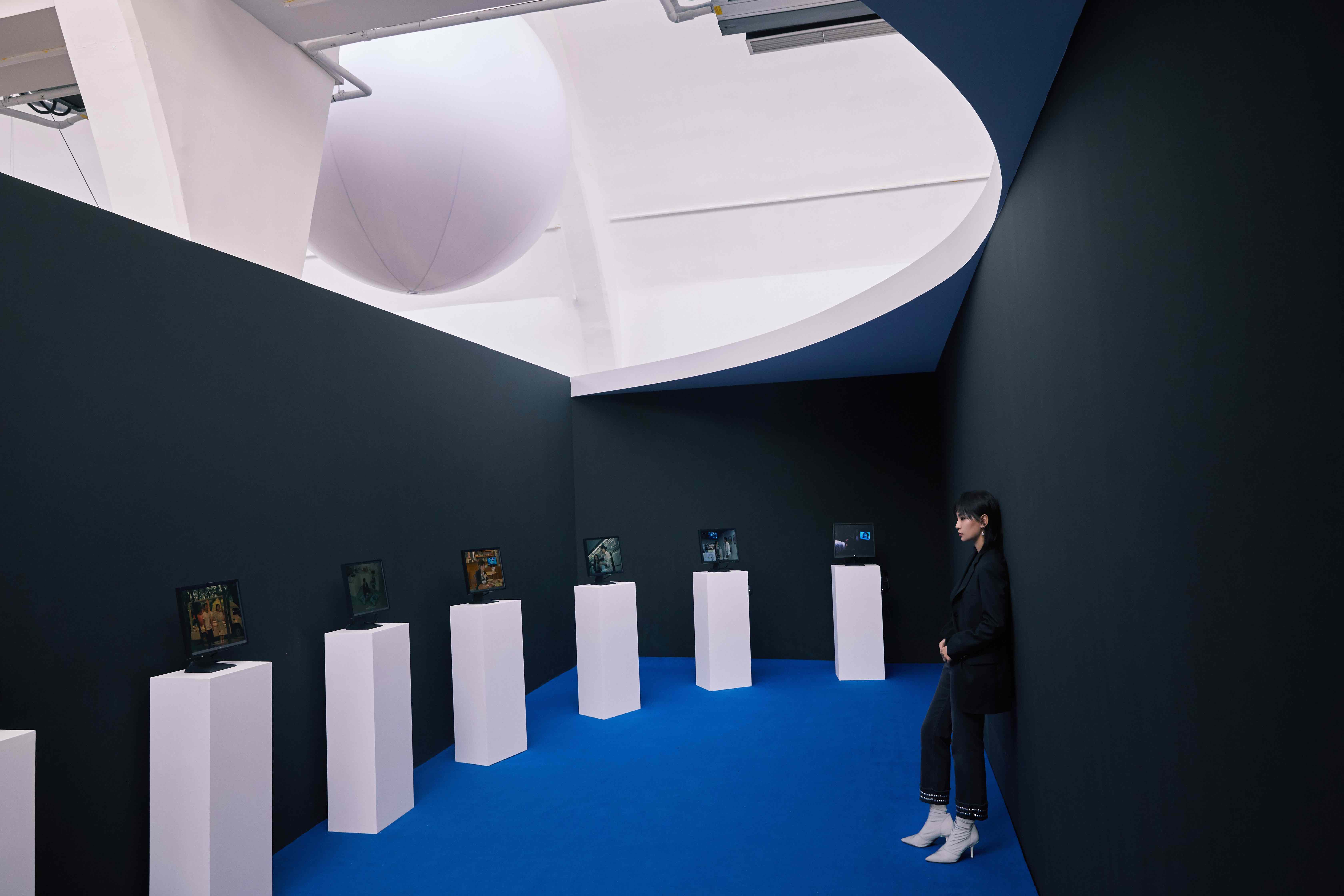
Installation view, ‘Lunar Phases’, UCCA Lab, Beijing, China, 2019
Image courtesy of Begins Studio
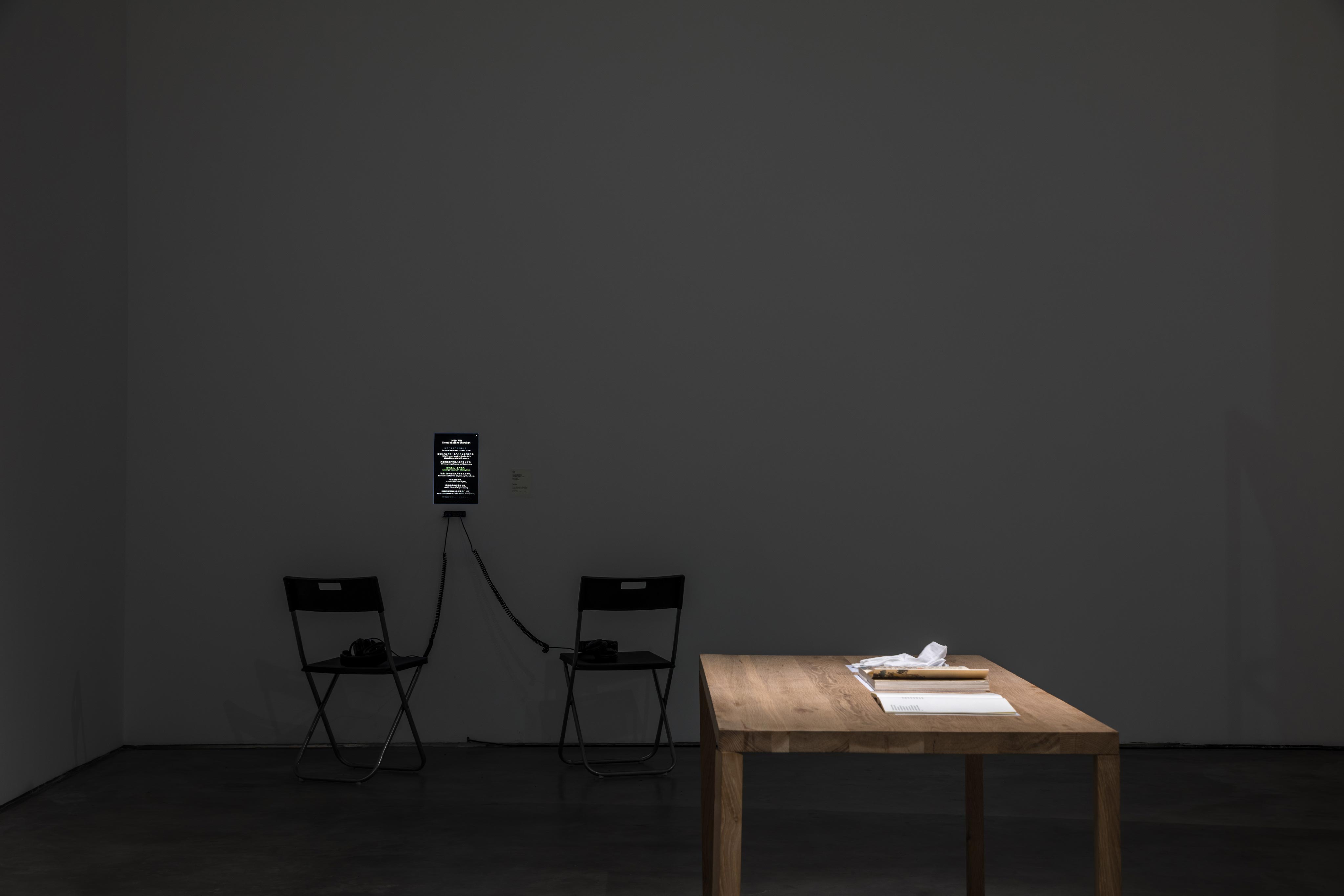
Installation view, ‘Long March Project: The Deficit Faction’, 2019
Photo by ARTEXB
Image courtesy of Long March Project
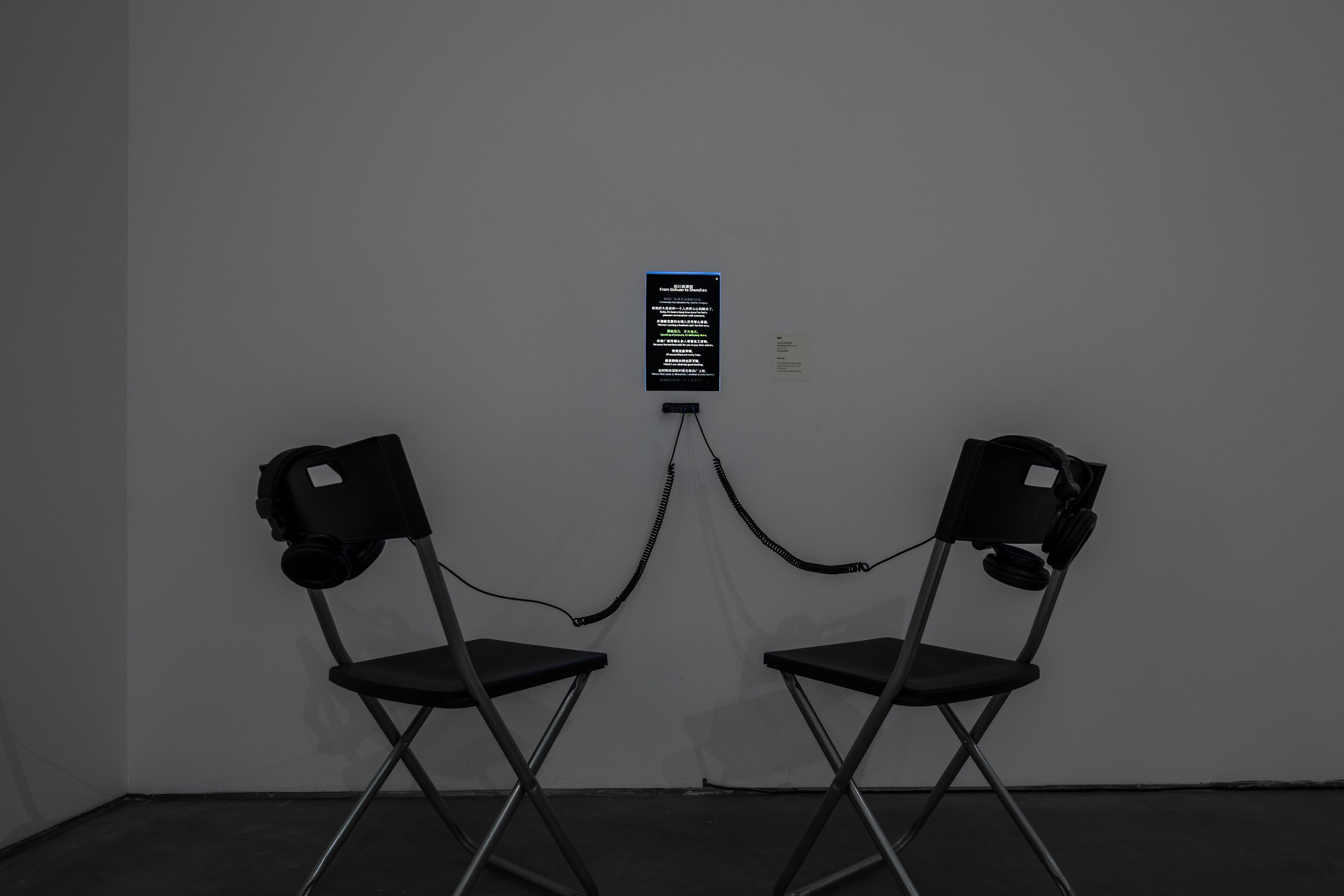
Installation view, ‘Long March Project: The Deficit Faction’, 2019
Photo by ARTEXB
Image courtesy of Long March Project
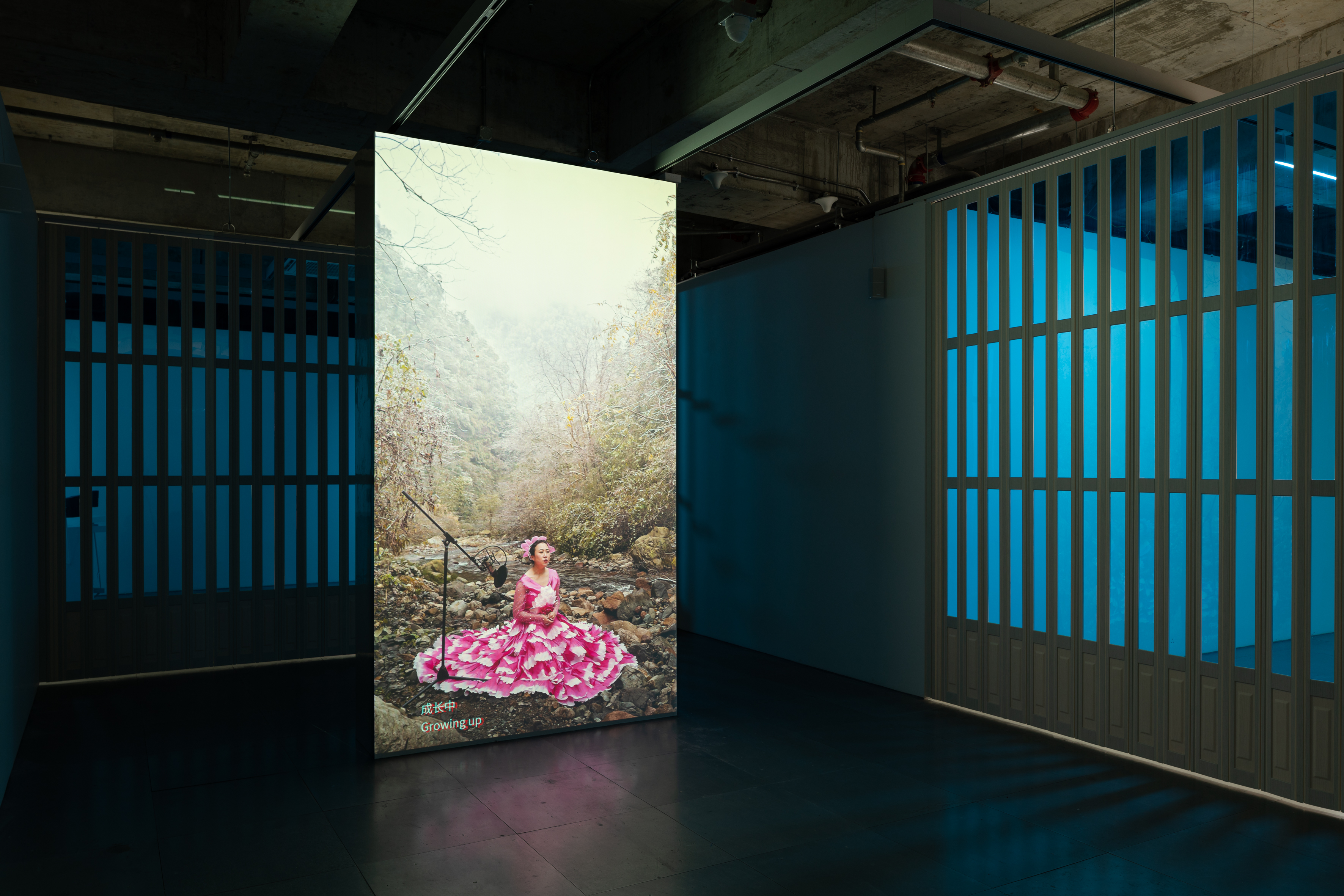
Single channel HD video, color, sound
14 min 12 sec
Installation view, ‘Rhythm and Senses’ at Edouard Malingue Gallery, Hong Kong, 2019
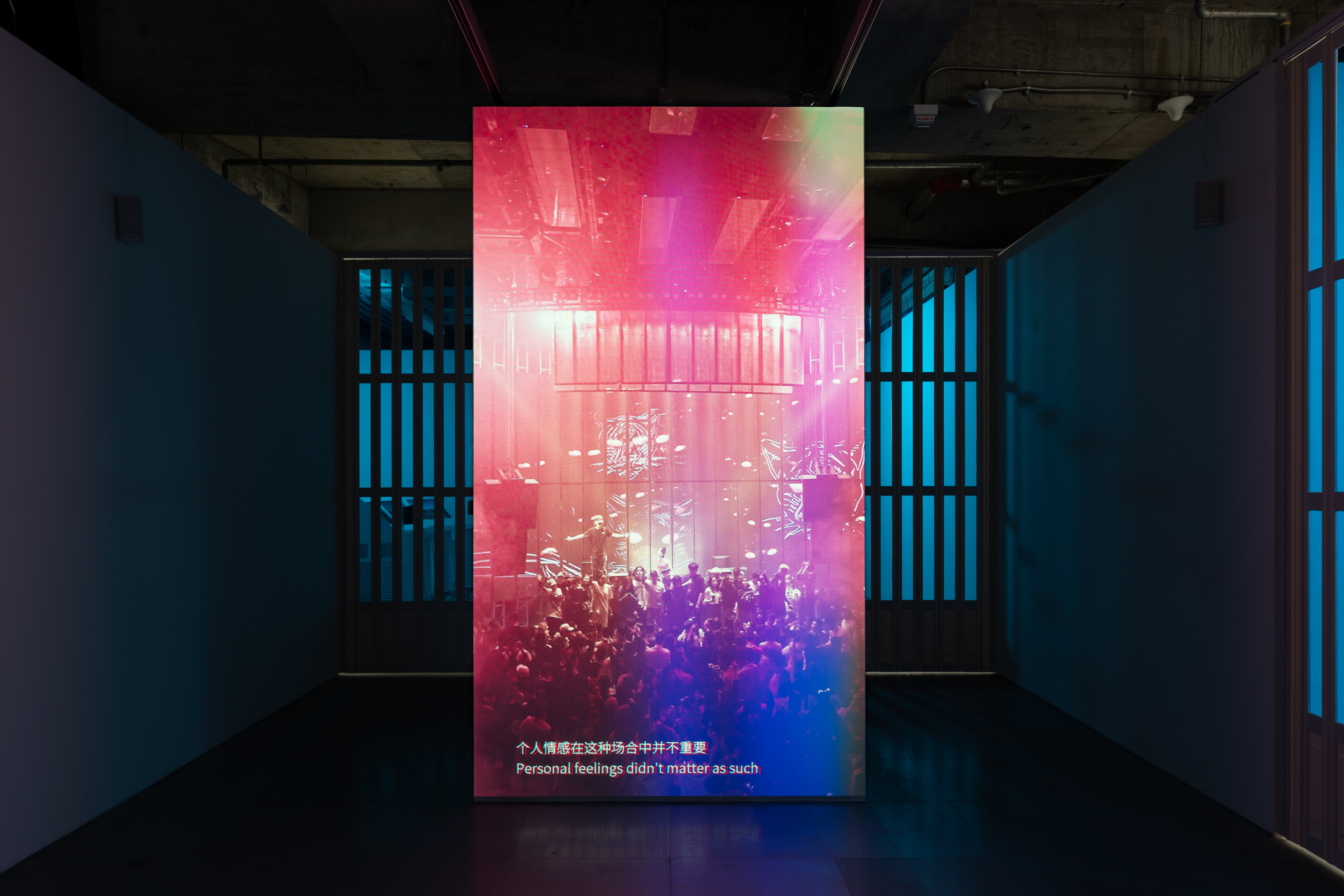
Single channel HD video, color, sound
14 min 12 sec
Installation view, ‘Rhythm and Senses’ at Edouard Malingue Gallery, Hong Kong, 2019
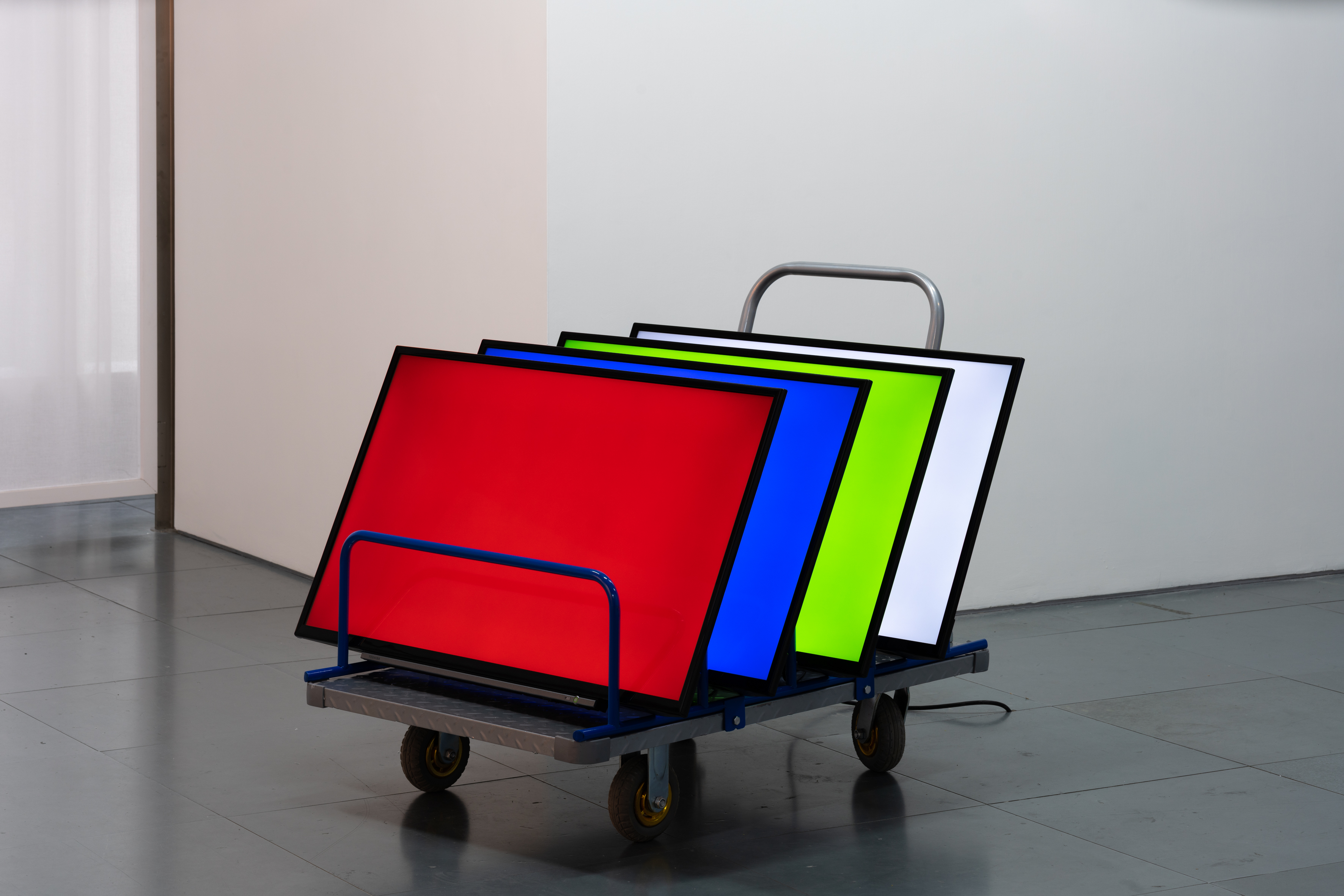
LED screens, trolley
Dimensions variable
Installation view, ‘Rhythm and Senses’ at Edouard Malingue Gallery, Hong Kong, 2019
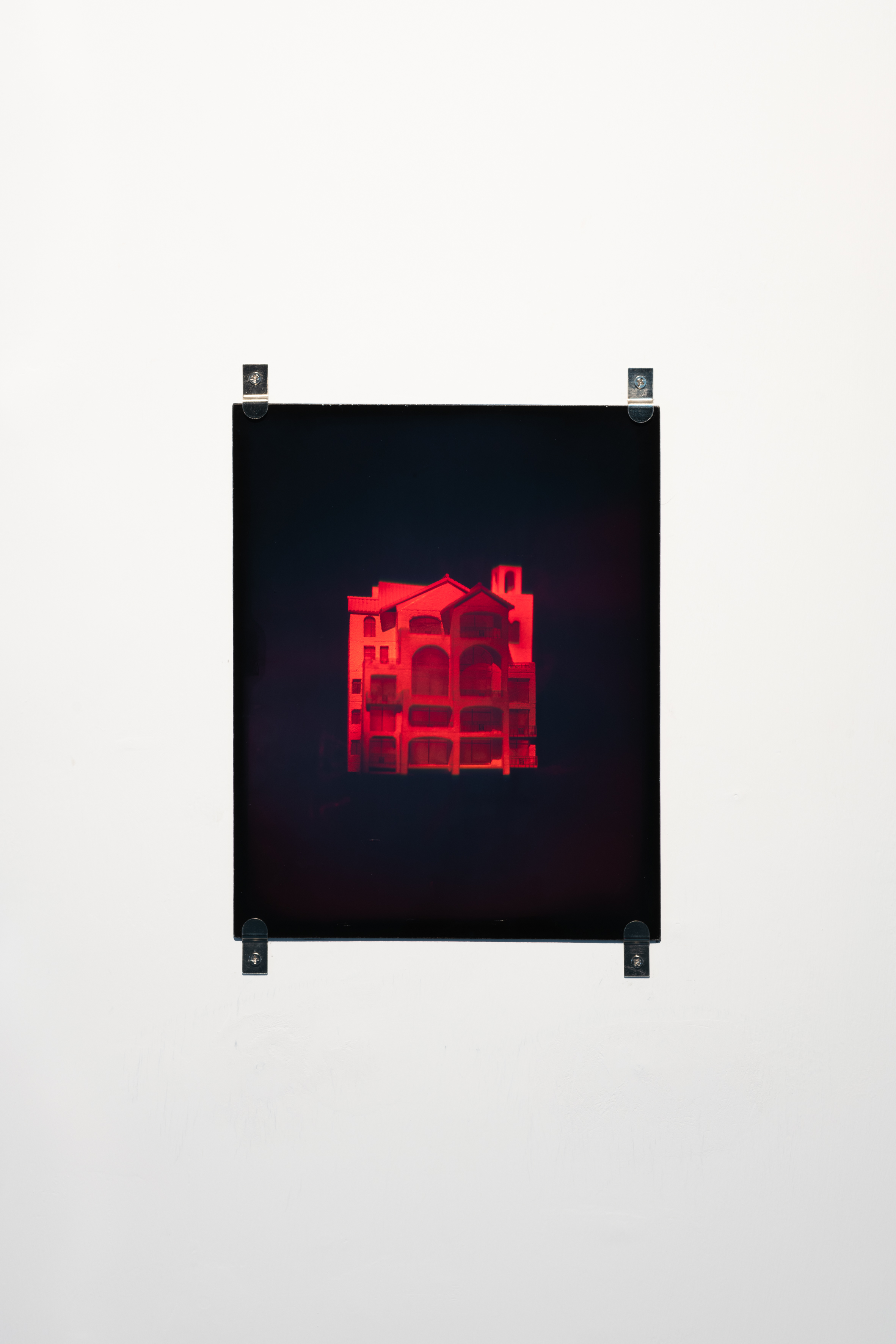
Hologram, glass
25 x 15 cm
Installation view, ‘Rhythm and Senses’ at Edouard Malingue Gallery, Hong Kong, 2019
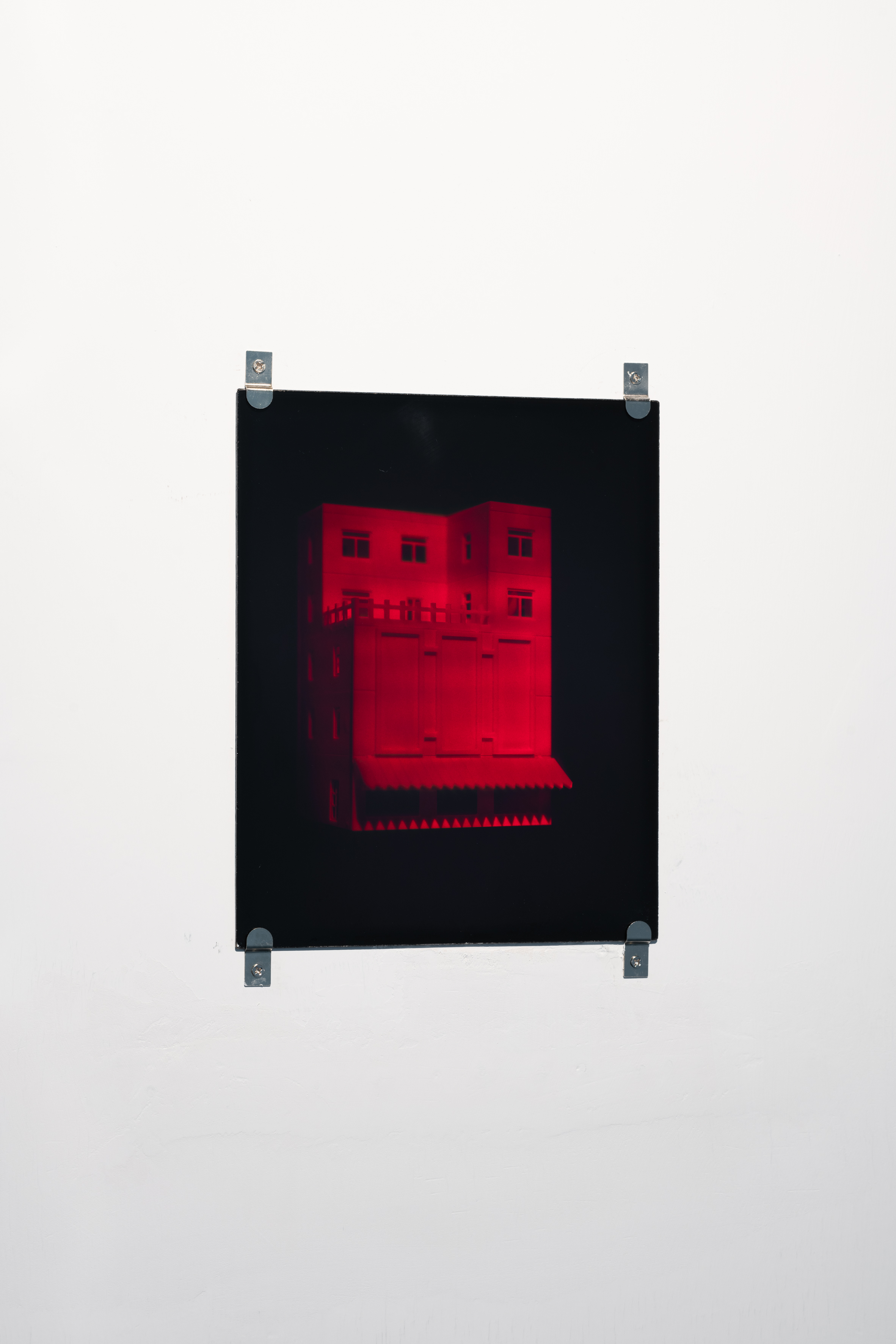
Hologram, glass
25 x 15 cm
Installation view, ‘Rhythm and Senses’ at Edouard Malingue Gallery, Hong Kong, 2019
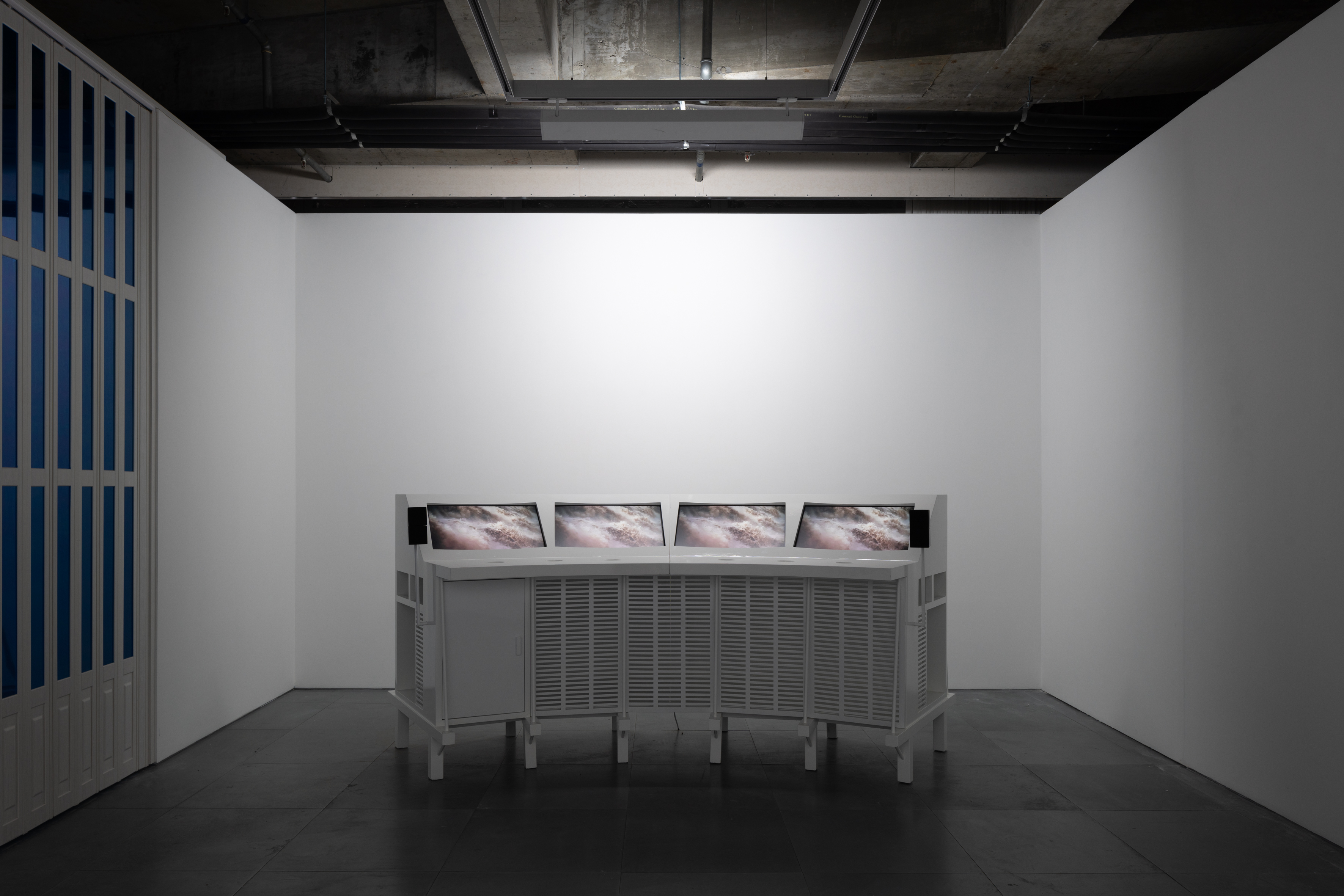
Video installation, sound, wood, LED screen, speaker
124 x 286 x 130 cm
Installation view, ‘Rhythm and Senses’ at Edouard Malingue Gallery, Hong Kong, 2019

2018
Double channel HD video, colour, sound
23 min 44 sec

2018
Double channel HD video, colour, sound
23 min 44 sec
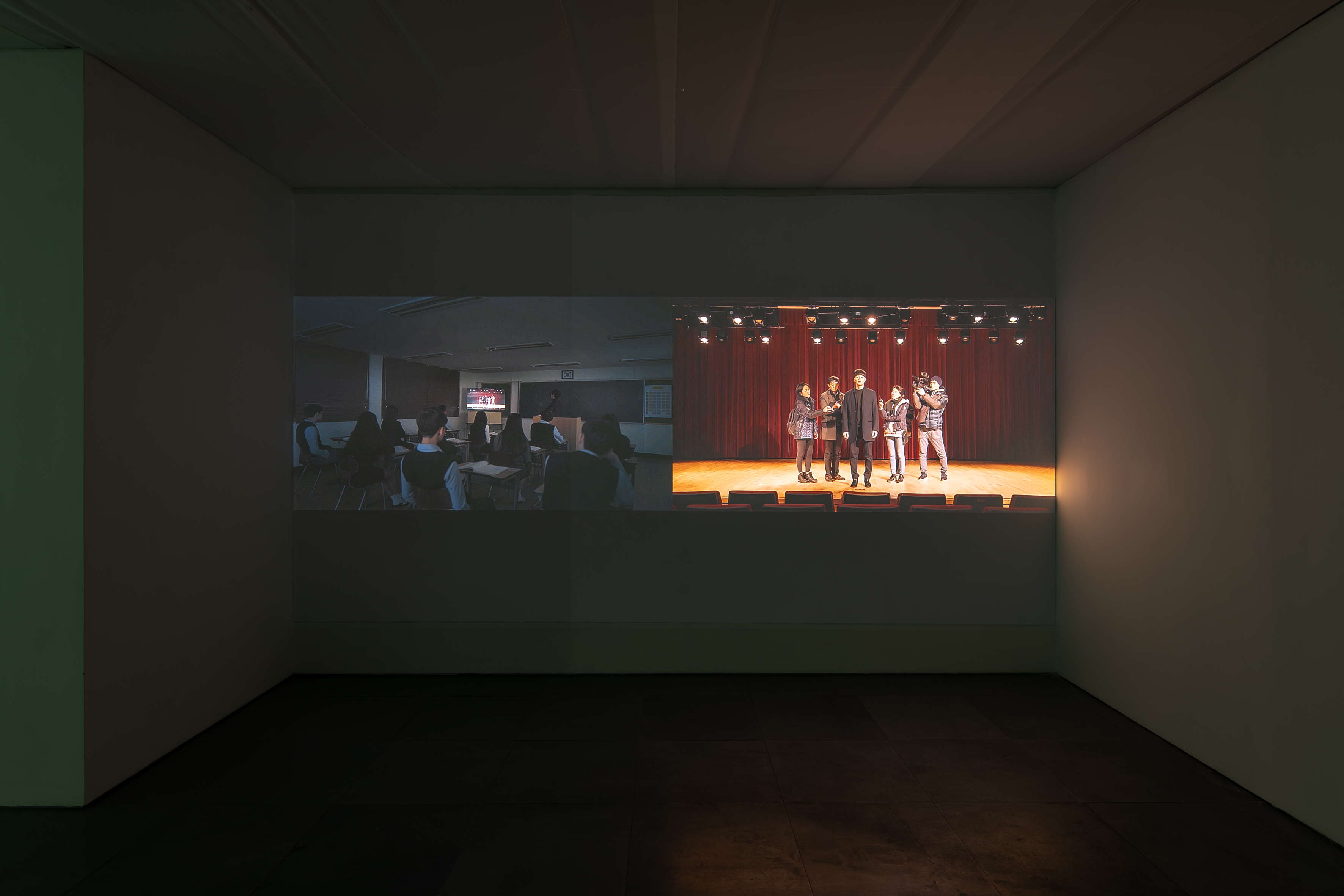
‘Film Screening II’ at Edouard Malingue Gallery, Hong Kong, 2018
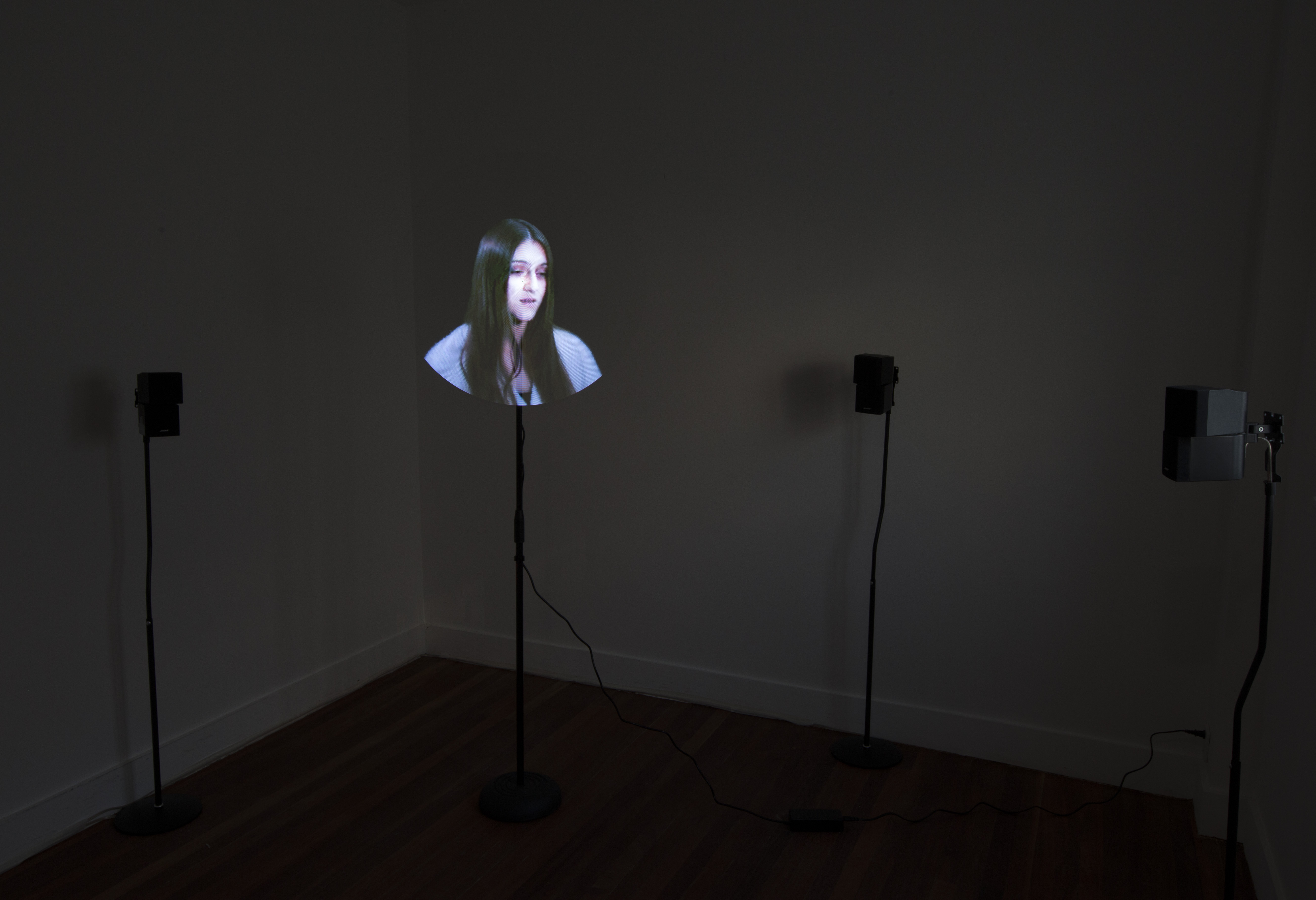
2018
Digital fan projection and sound
10 min 36 sec
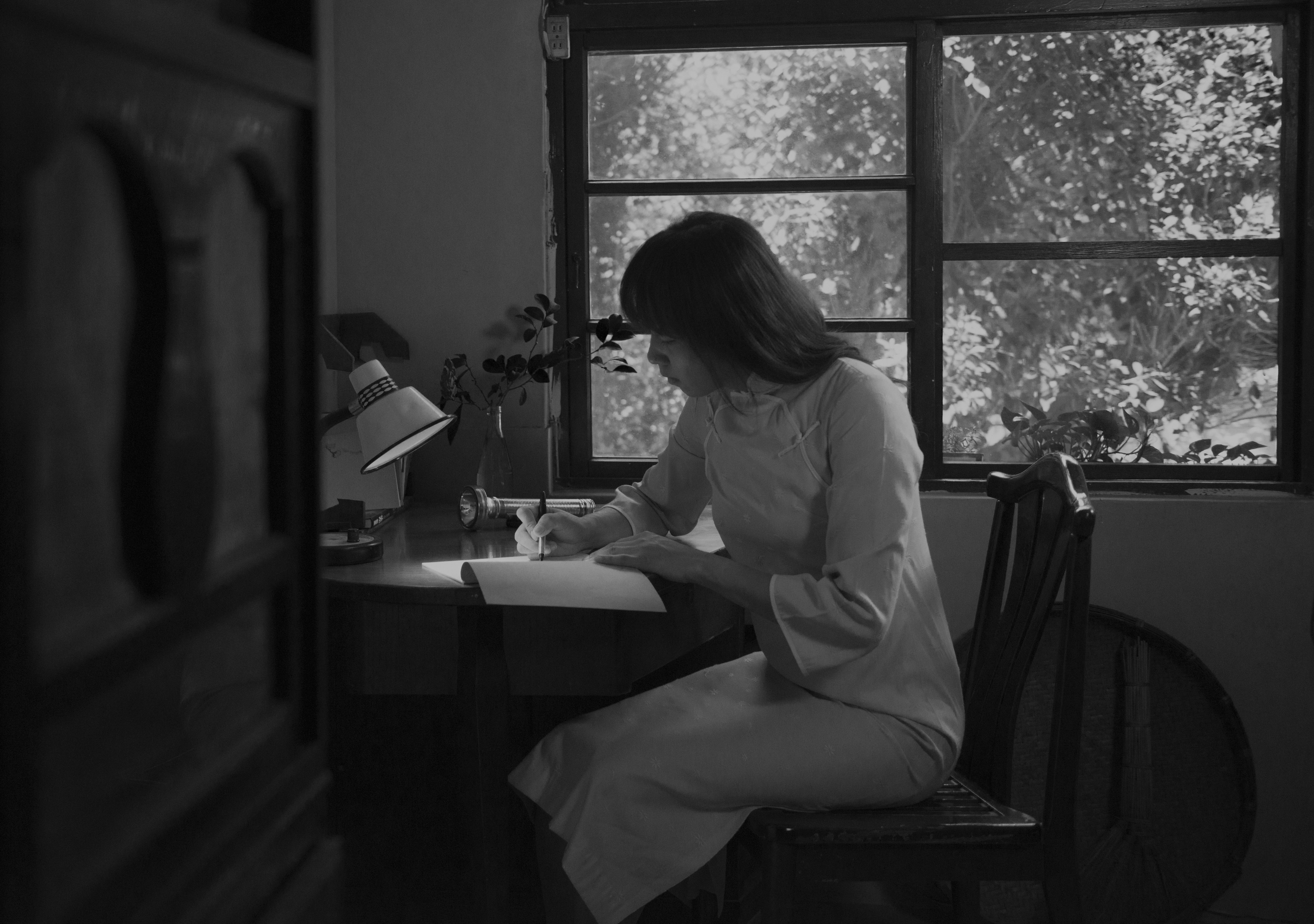
2018
Digital output
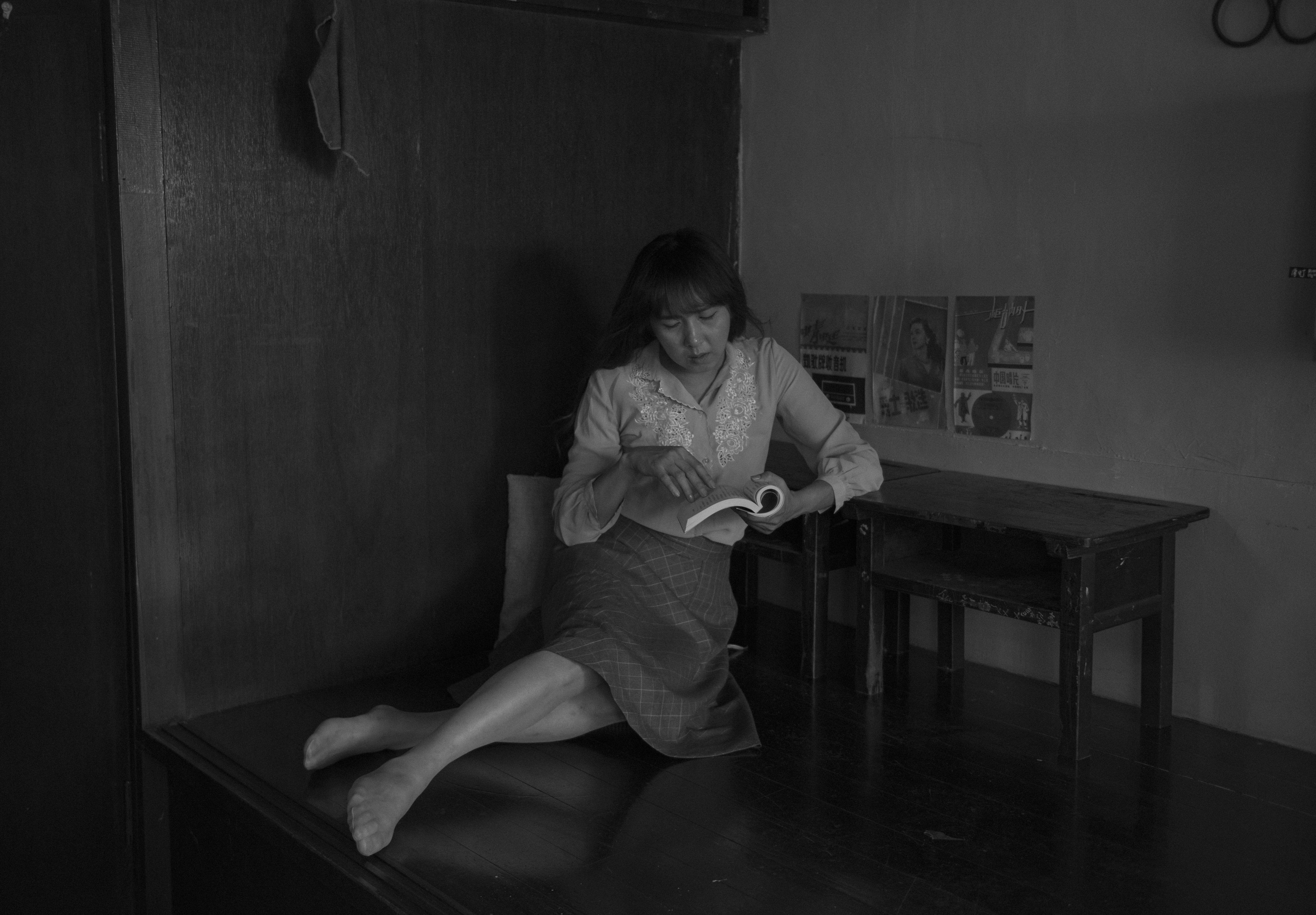
2018
Digital output

2017
HD video installation, colour, sound
40 mins

‘Hugo Boss Asia Art: Award for Emerging Asian Artists’ at Rockbund Art Museum, 2017
Courtesy Kyoto Art Center, A4 Museum, RAM
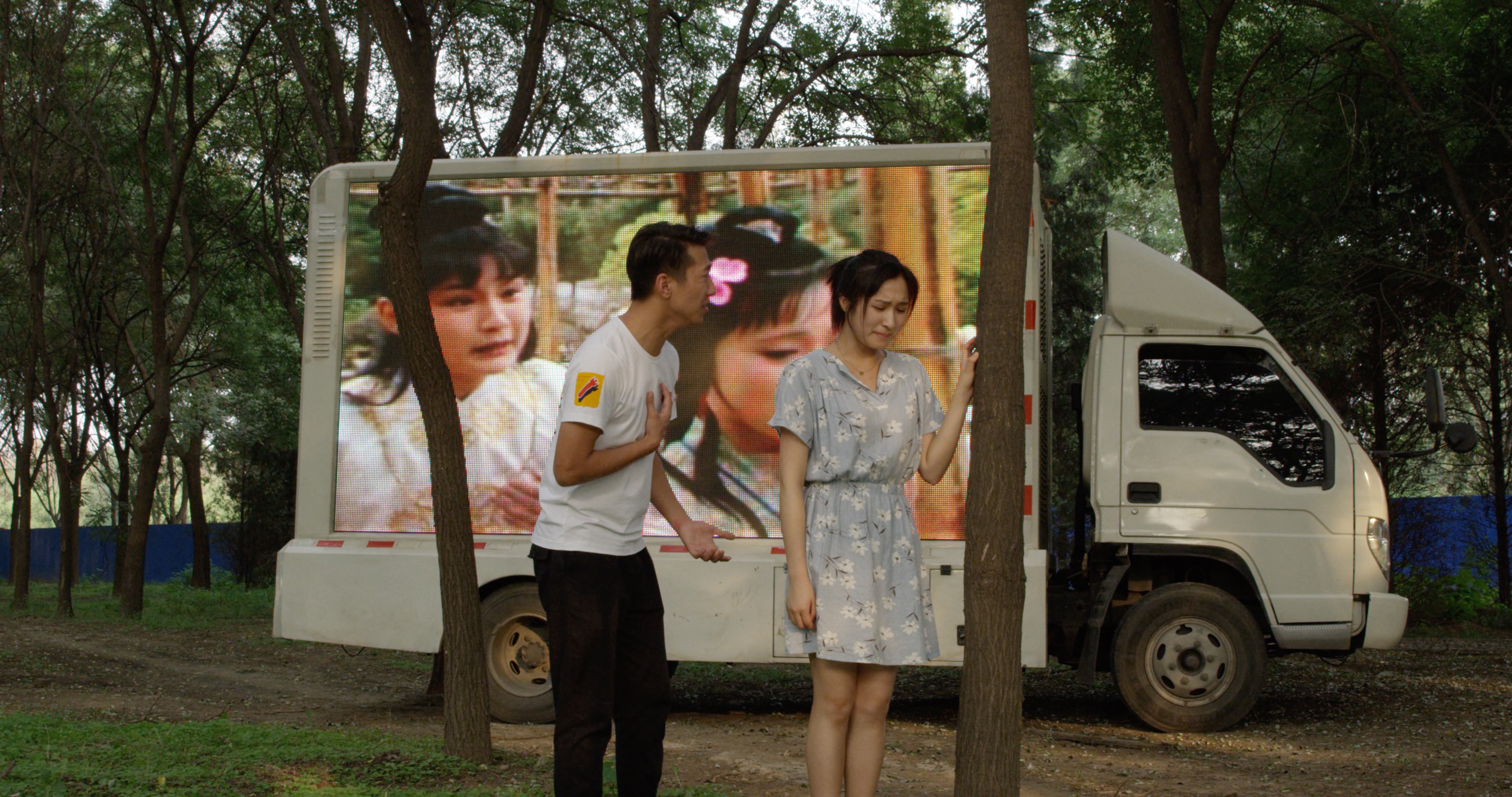
2016
Screenshot, HD video, colour, sound
14 min 27 sec
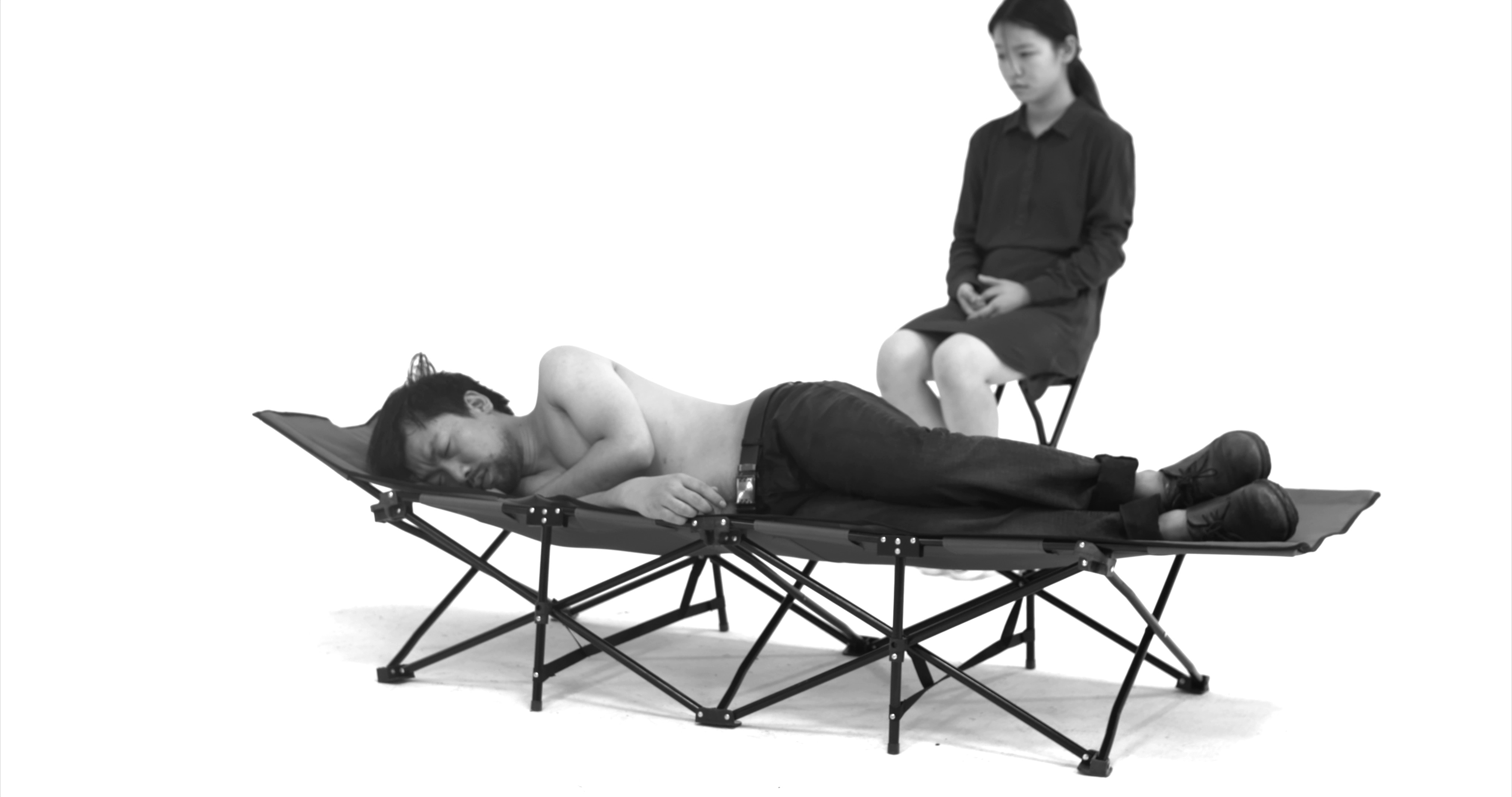
2015
Screenshot, HD video, colour, sound
19 min 32 sec
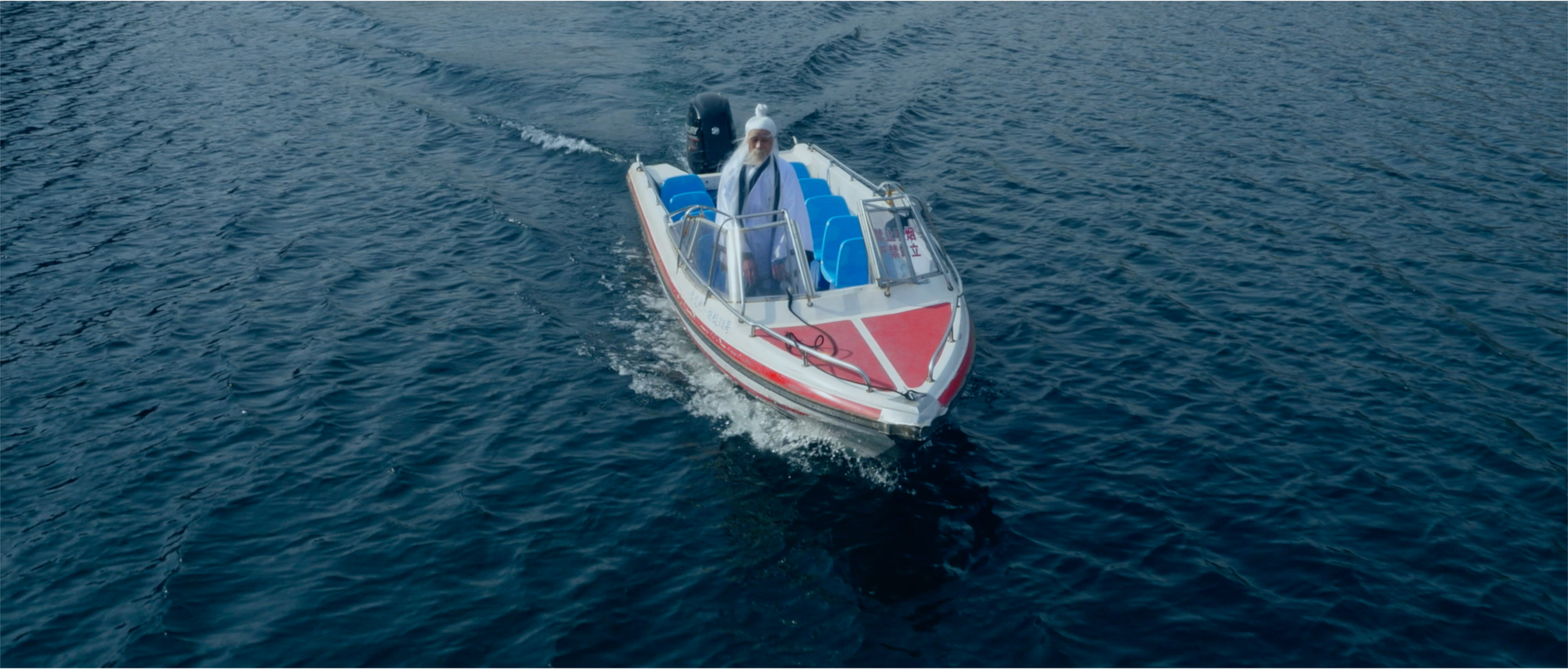
2015
Screenshot, single channel HD video, colour, sound
11 min 48 sec
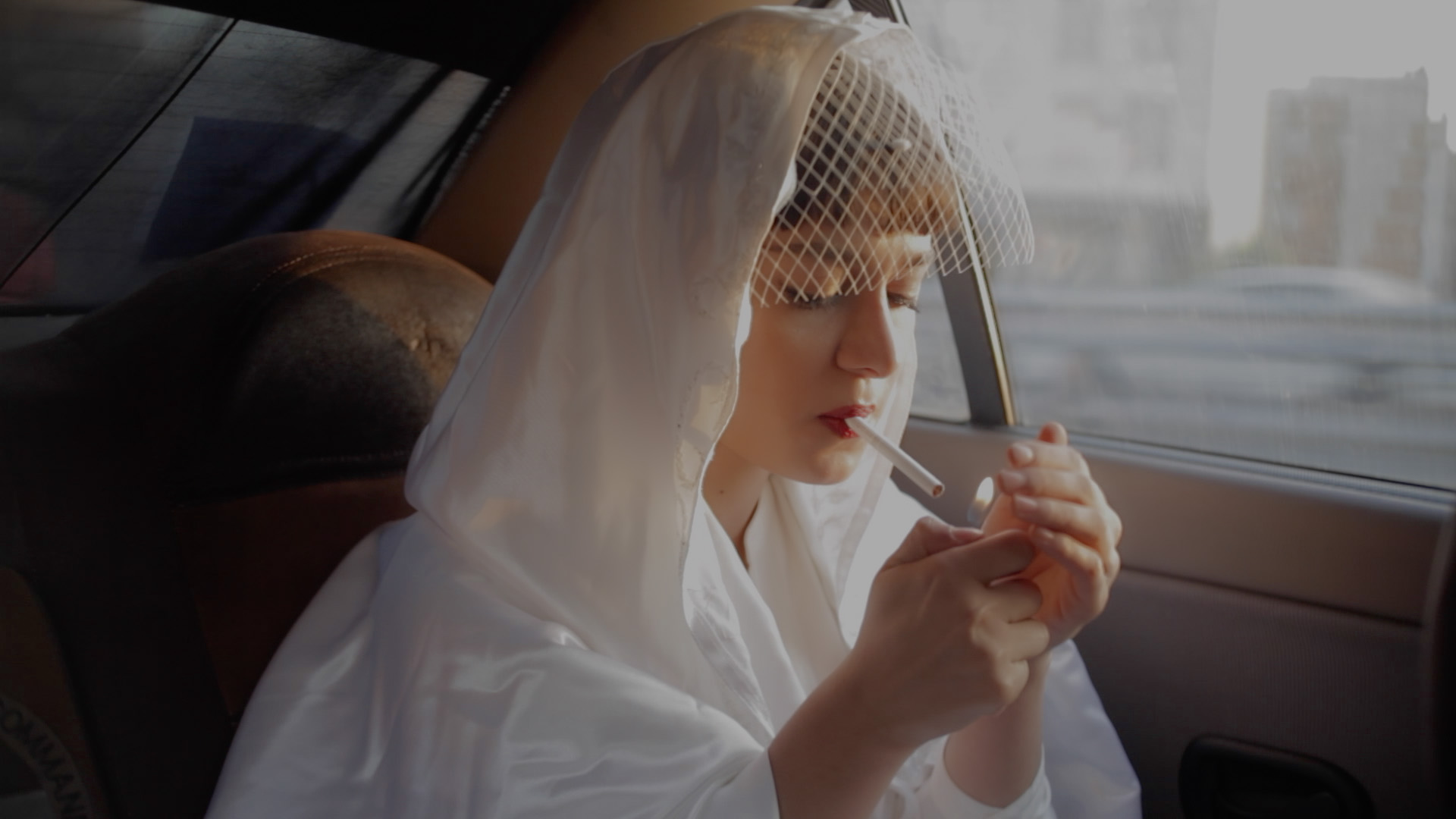
2014
Single channel HD video, colour, sound
4 min 14 sec

2014
Still, inkjet print; single channel HD video, colour, sound
16 min 43 sec
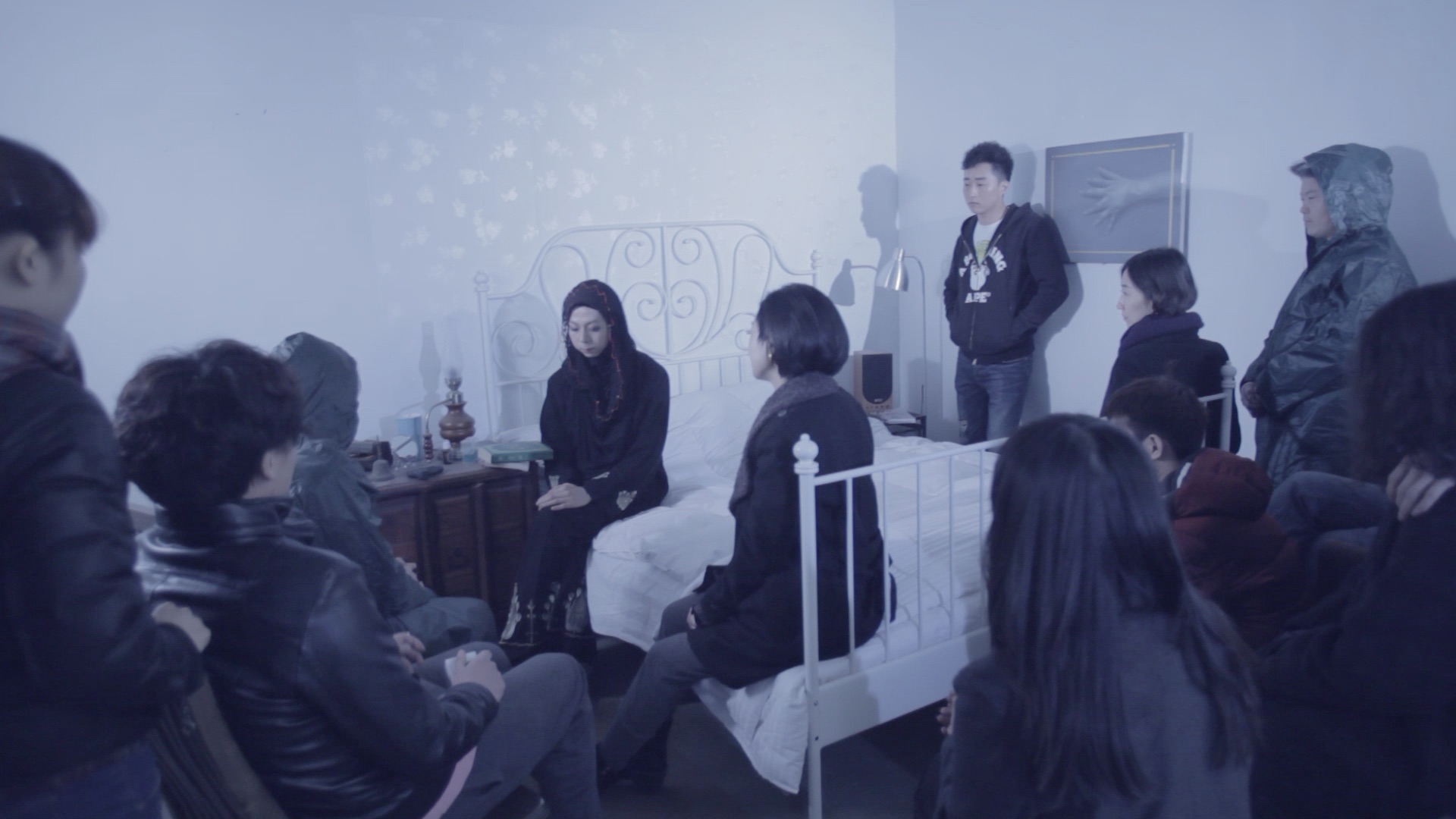
2013
Single channel video, colour, sound
3 min 45 sec
-Dimensions-Variable,2010,04.jpg)
2010
Single channel video, colour, sound
30 min 1 sec
-Dimensions-Variable,2010,02.jpg)
2010
Single channel video, colour, sound
30 min 1 sec